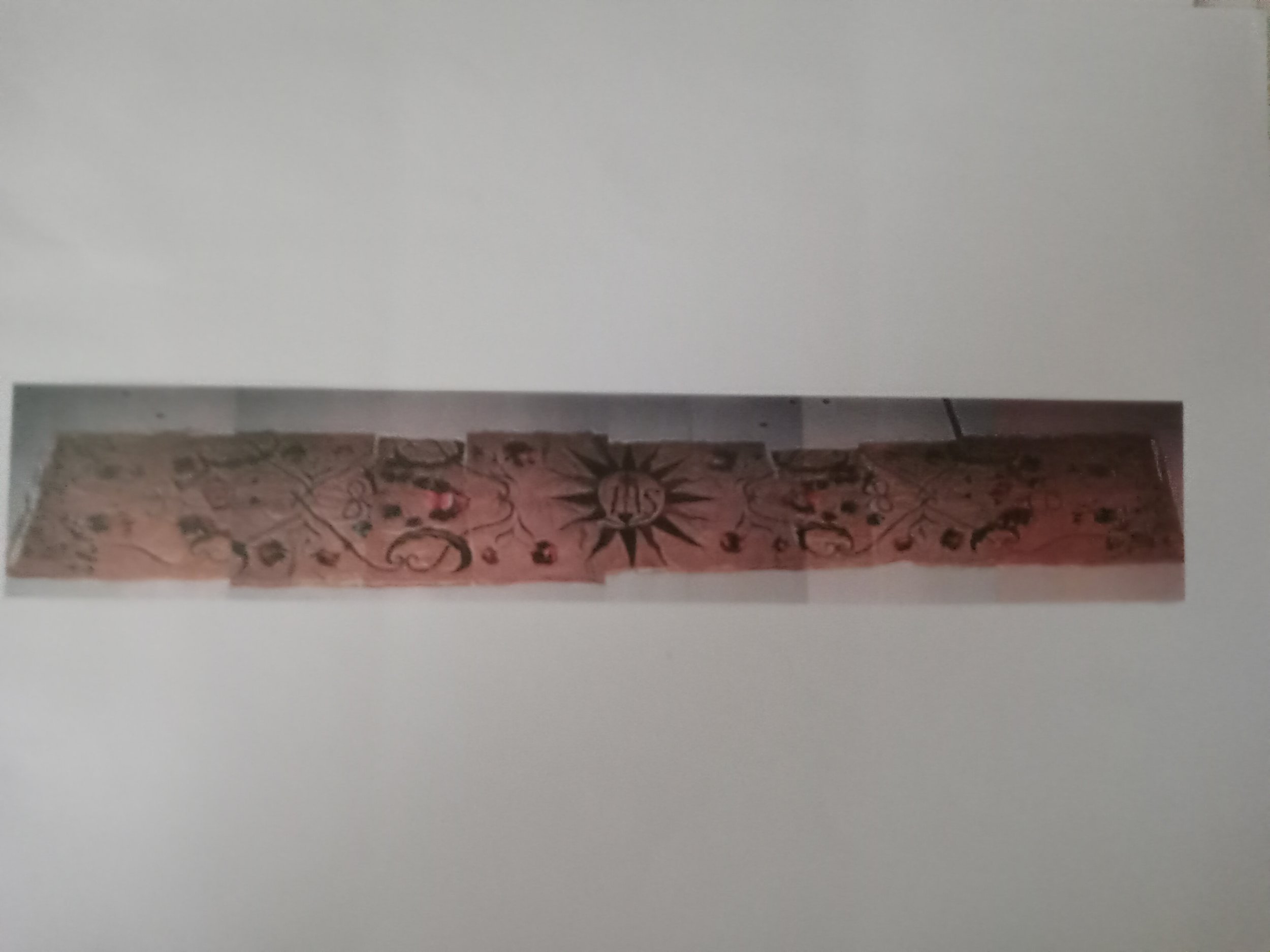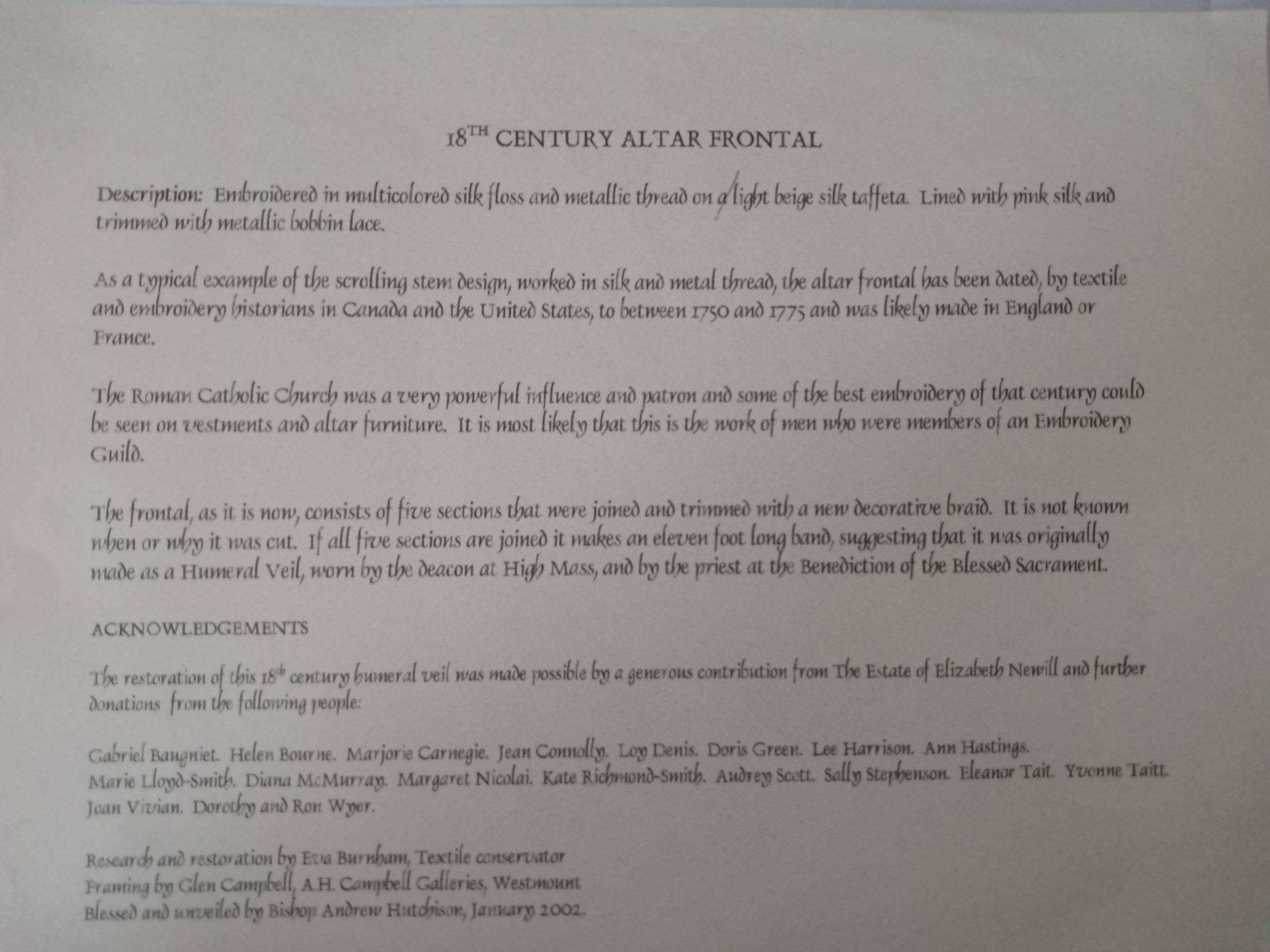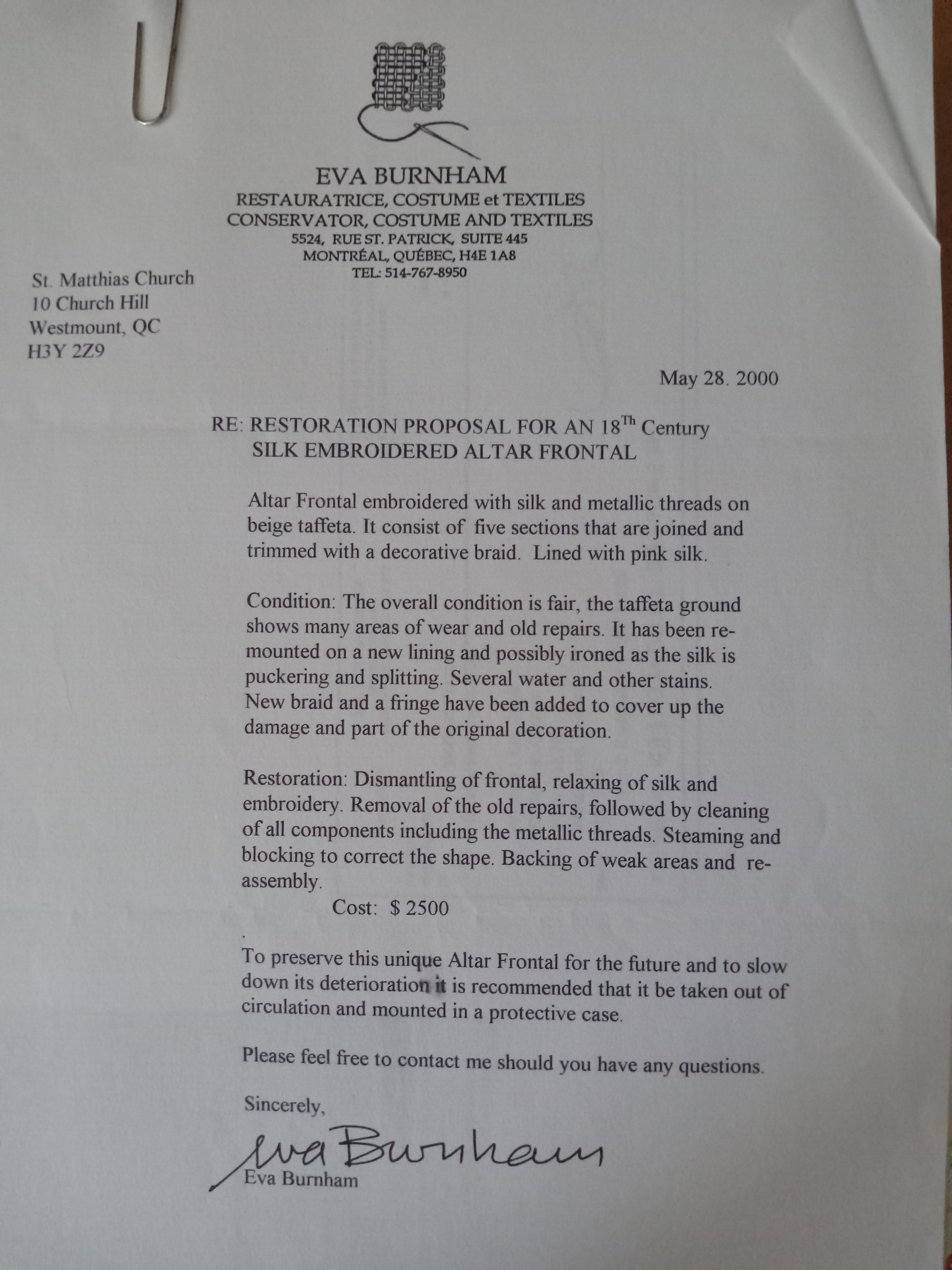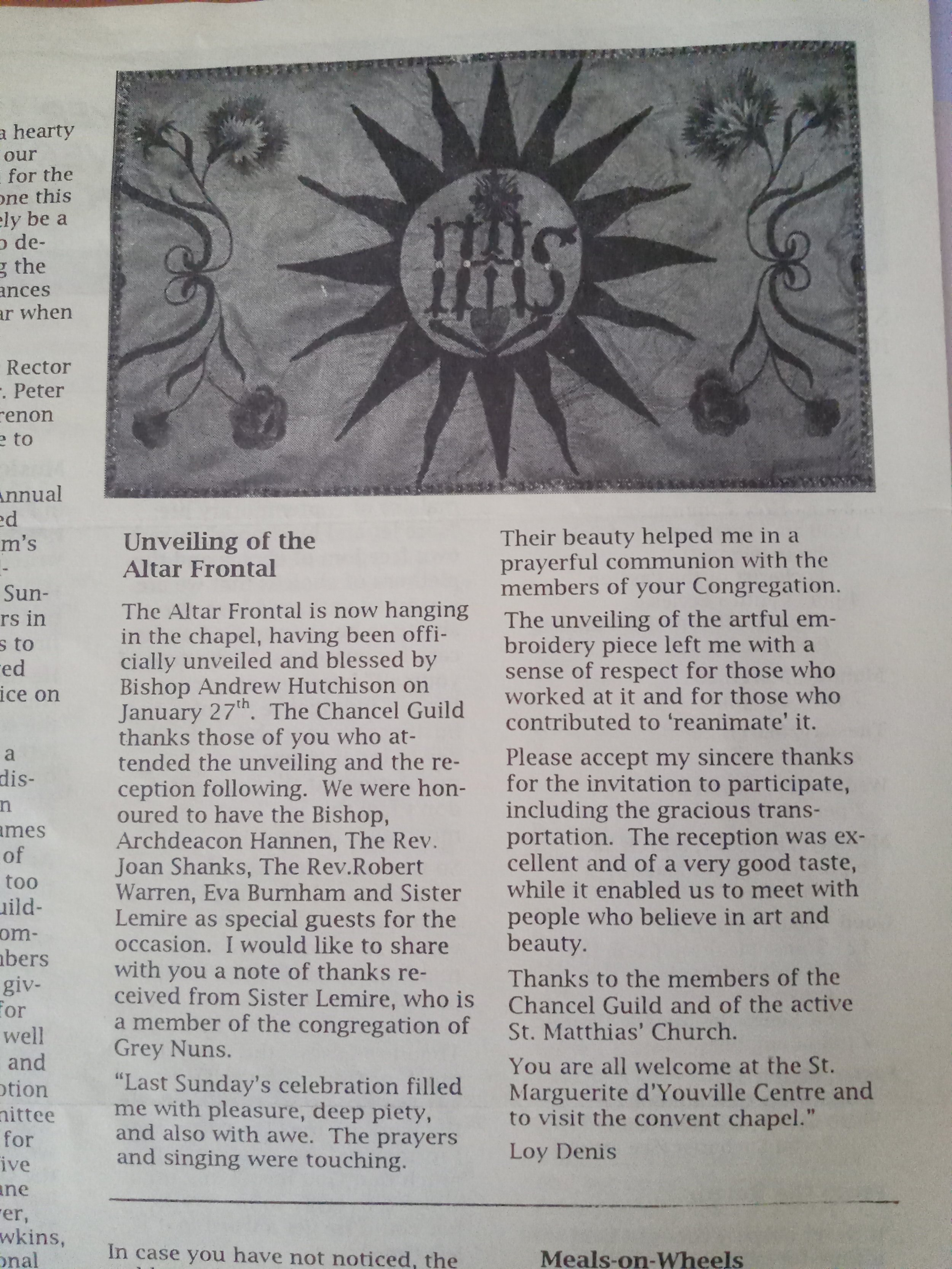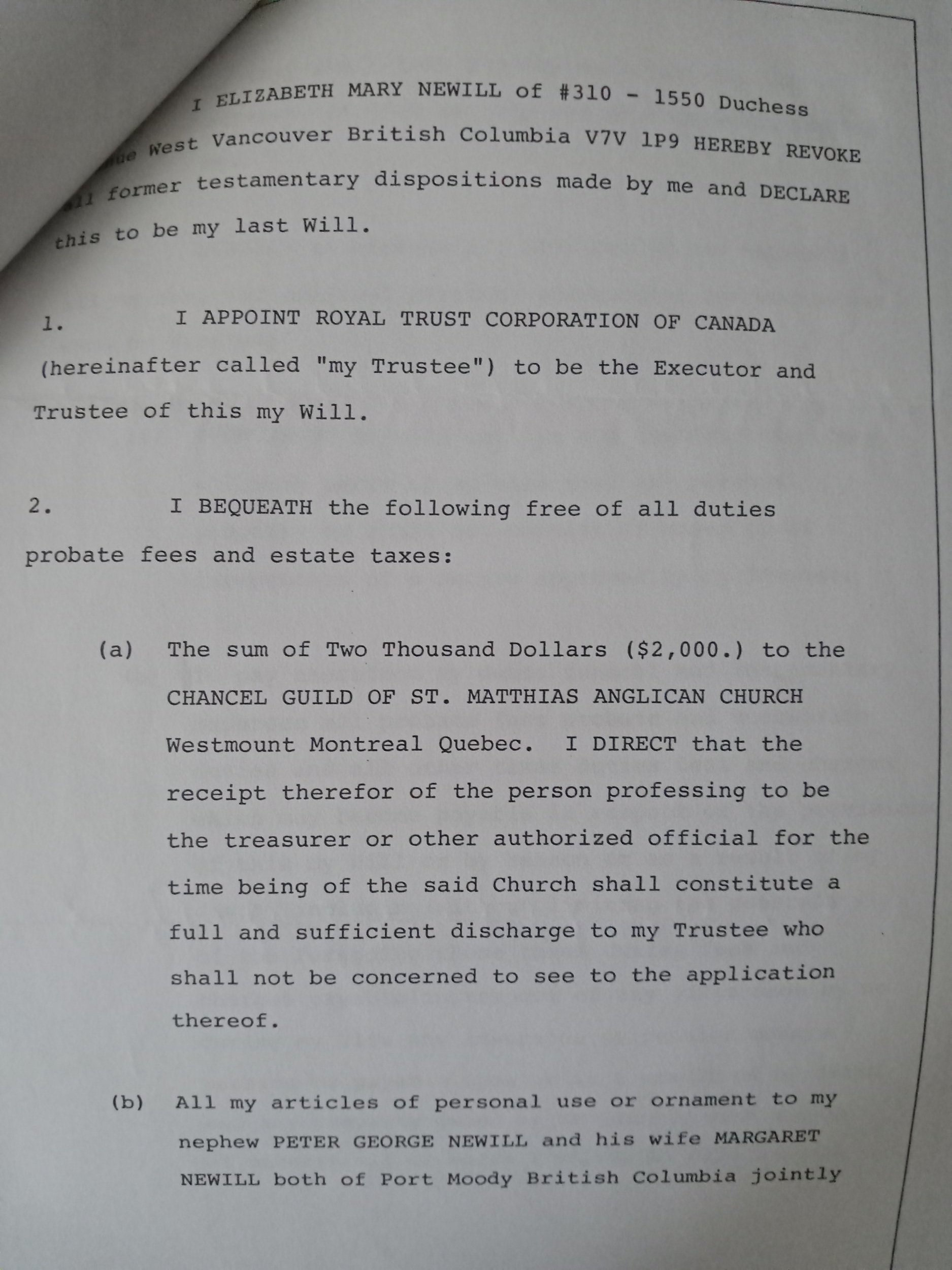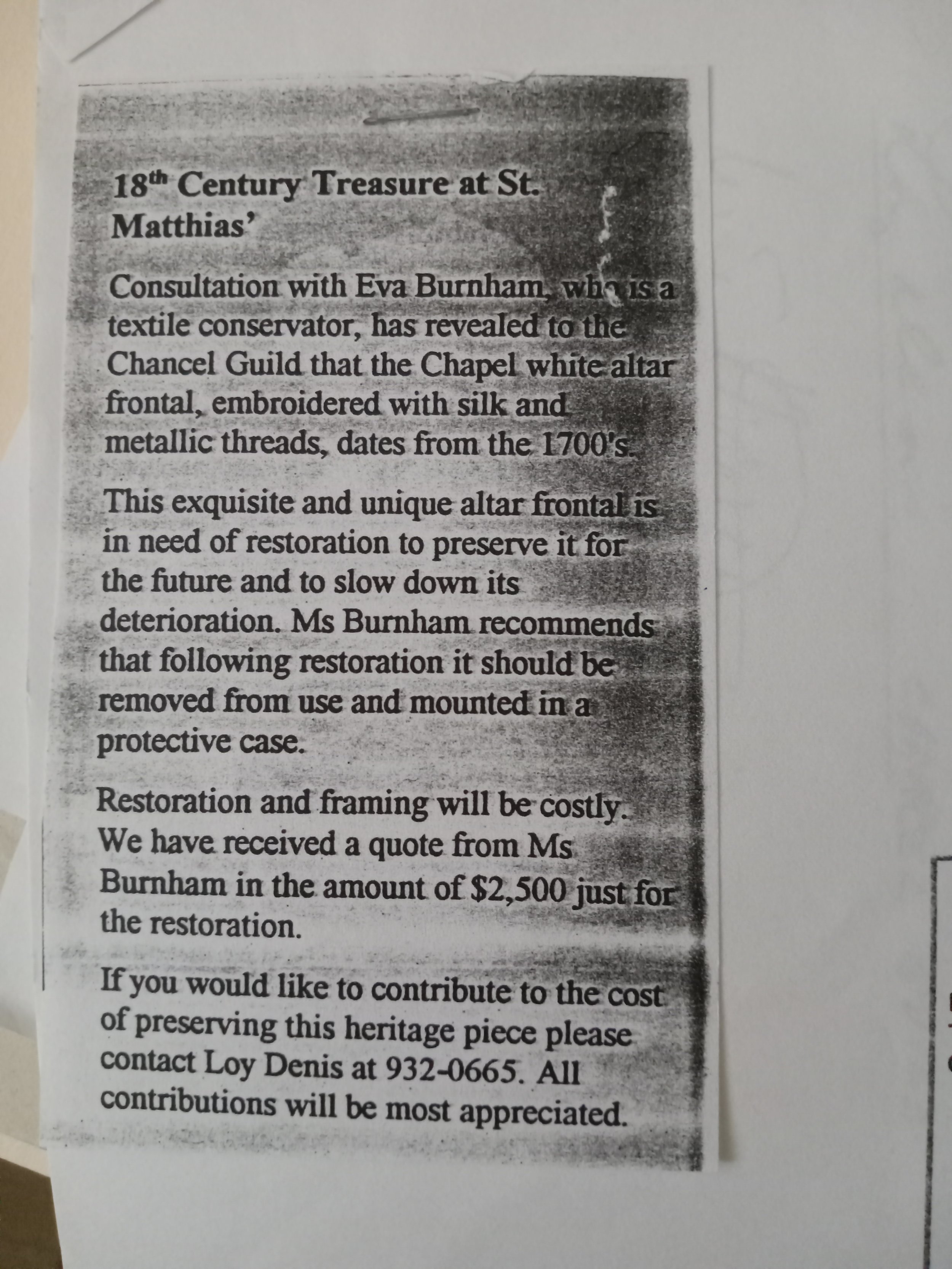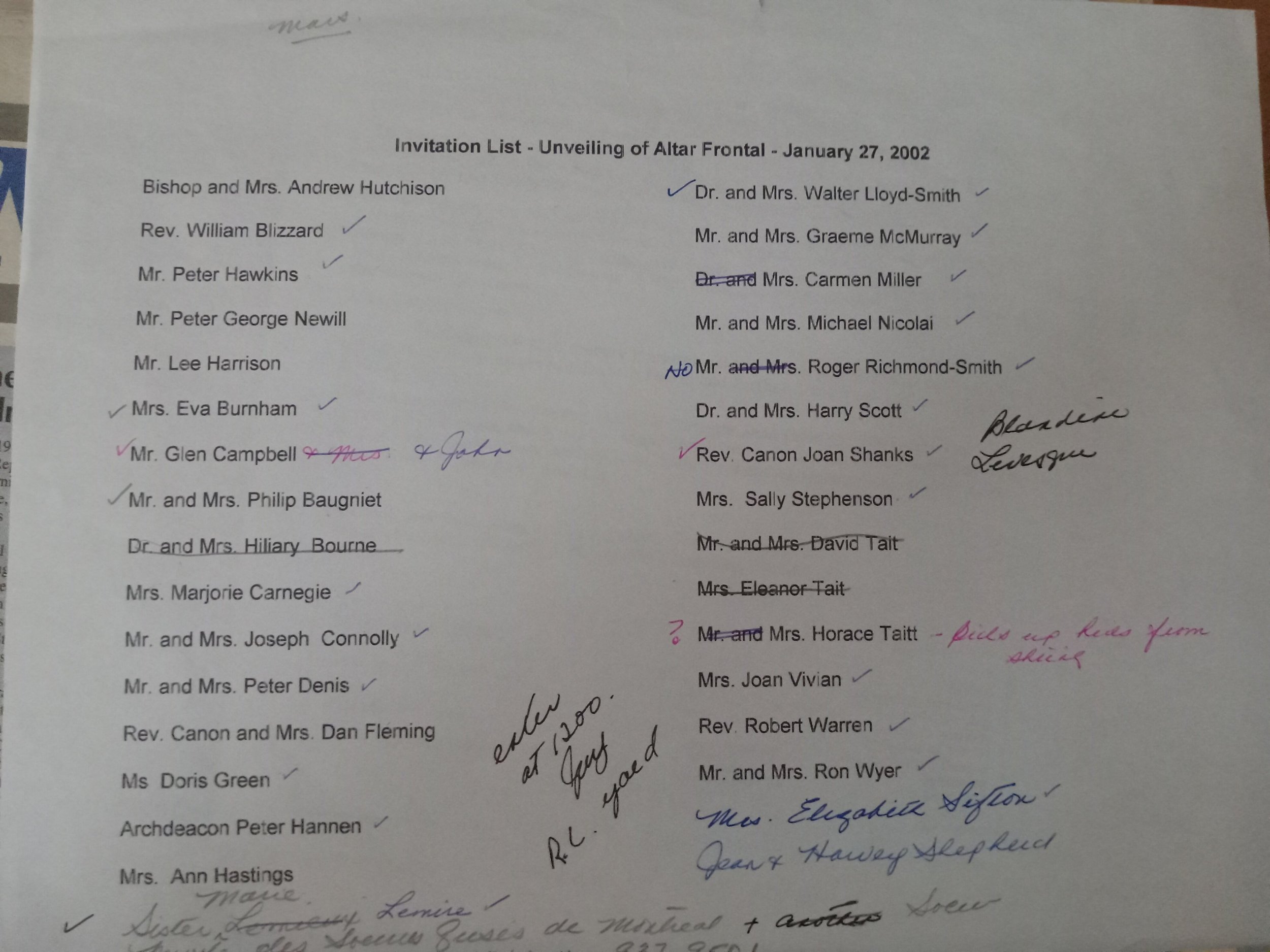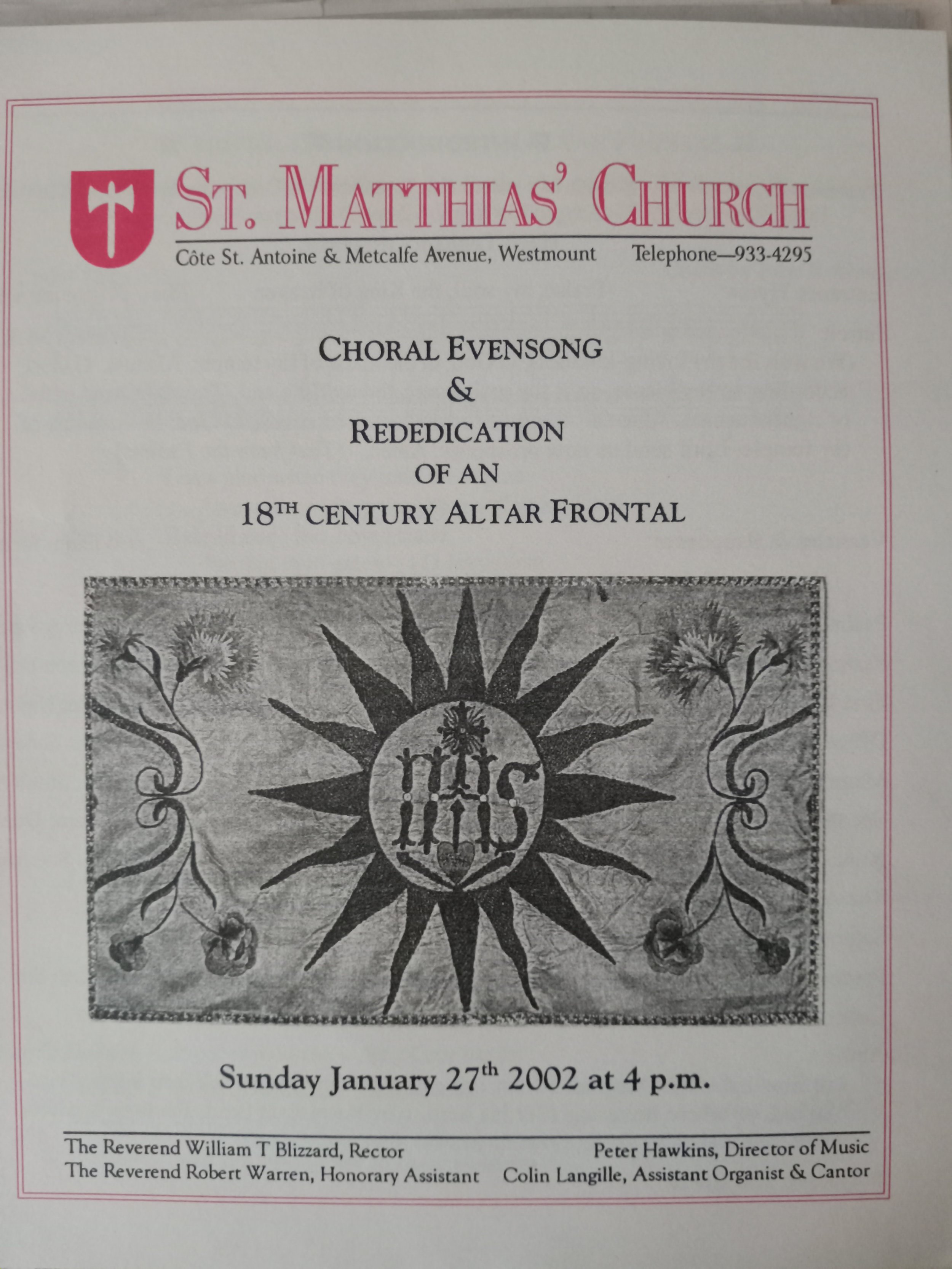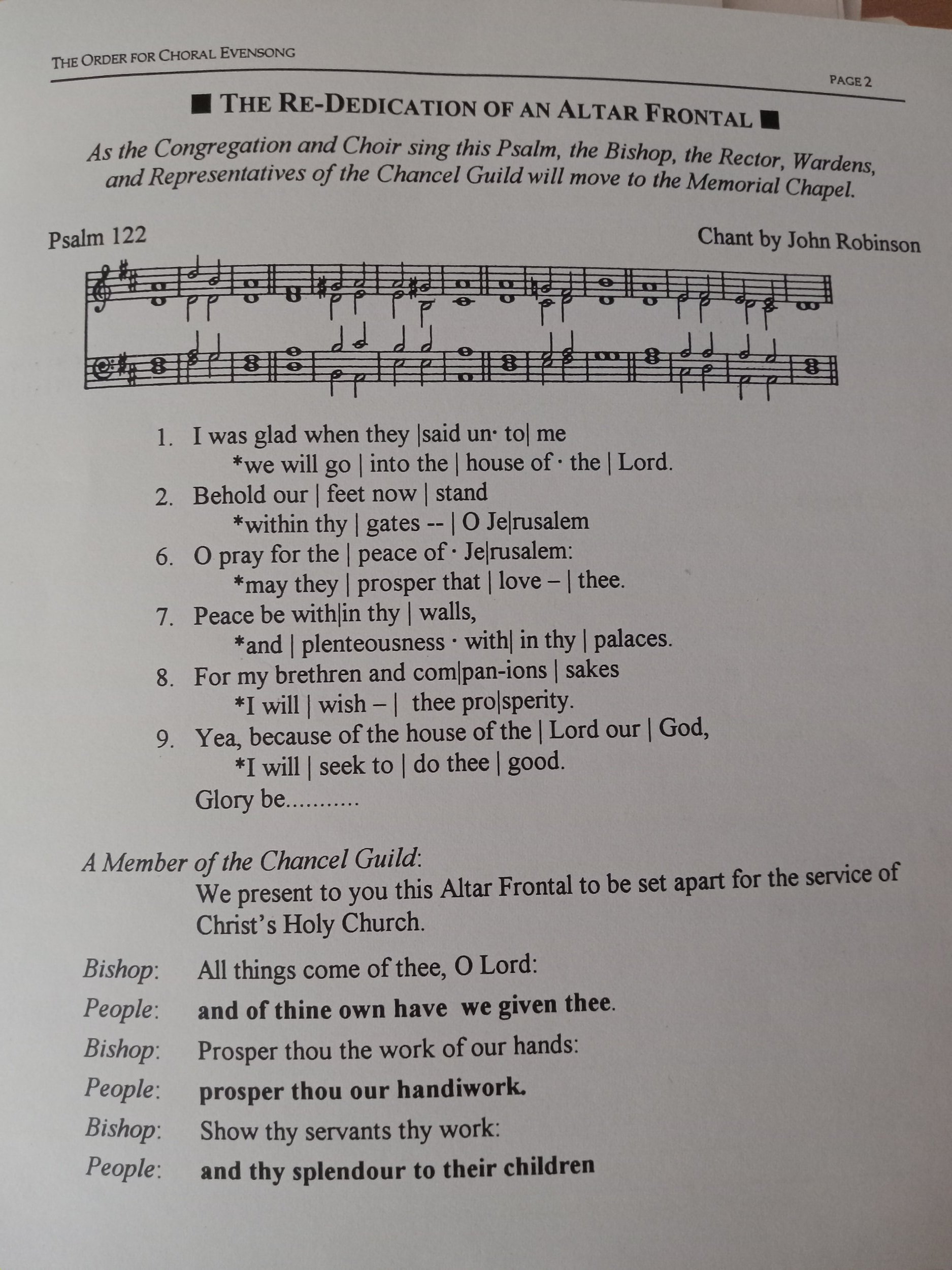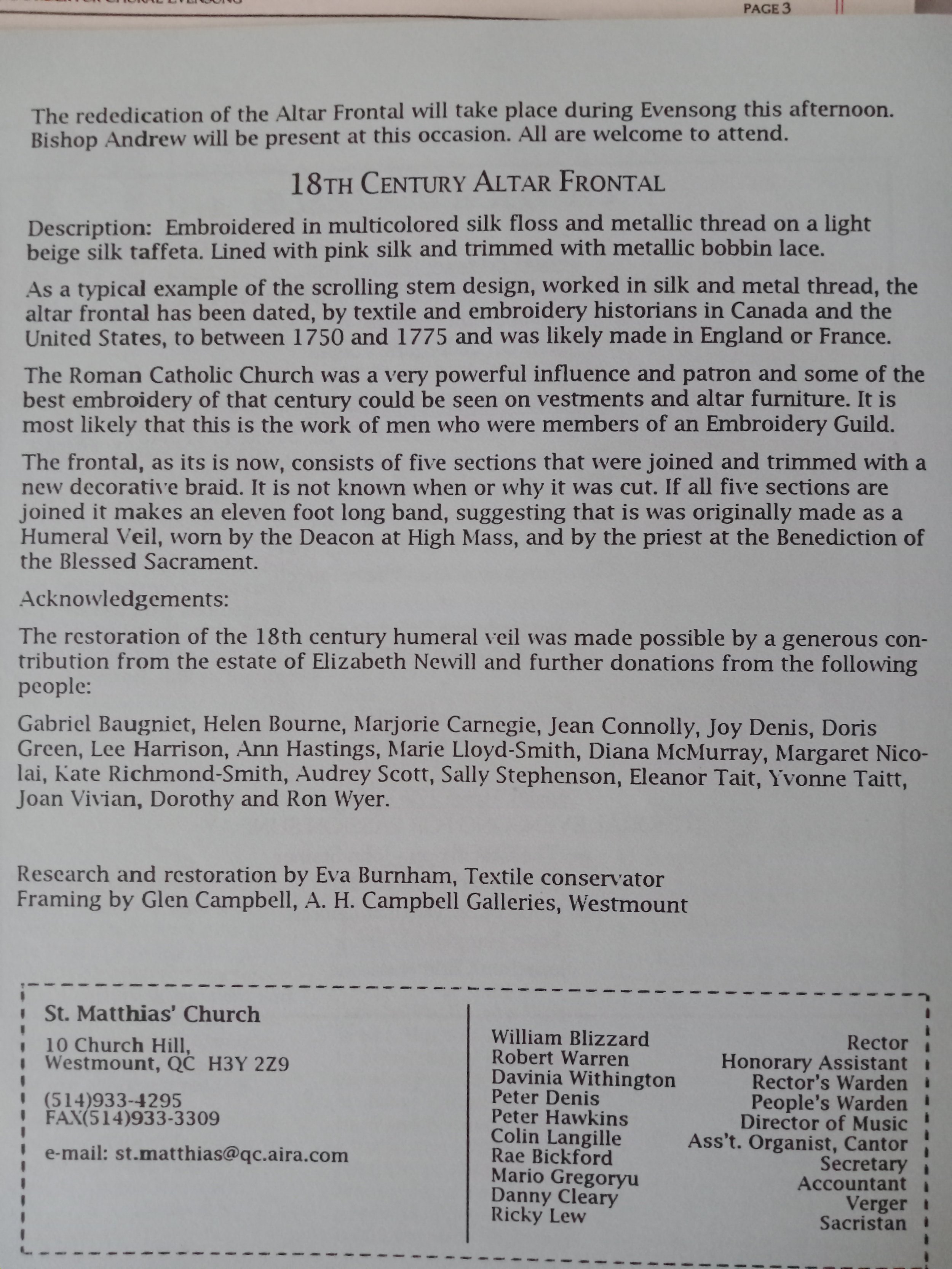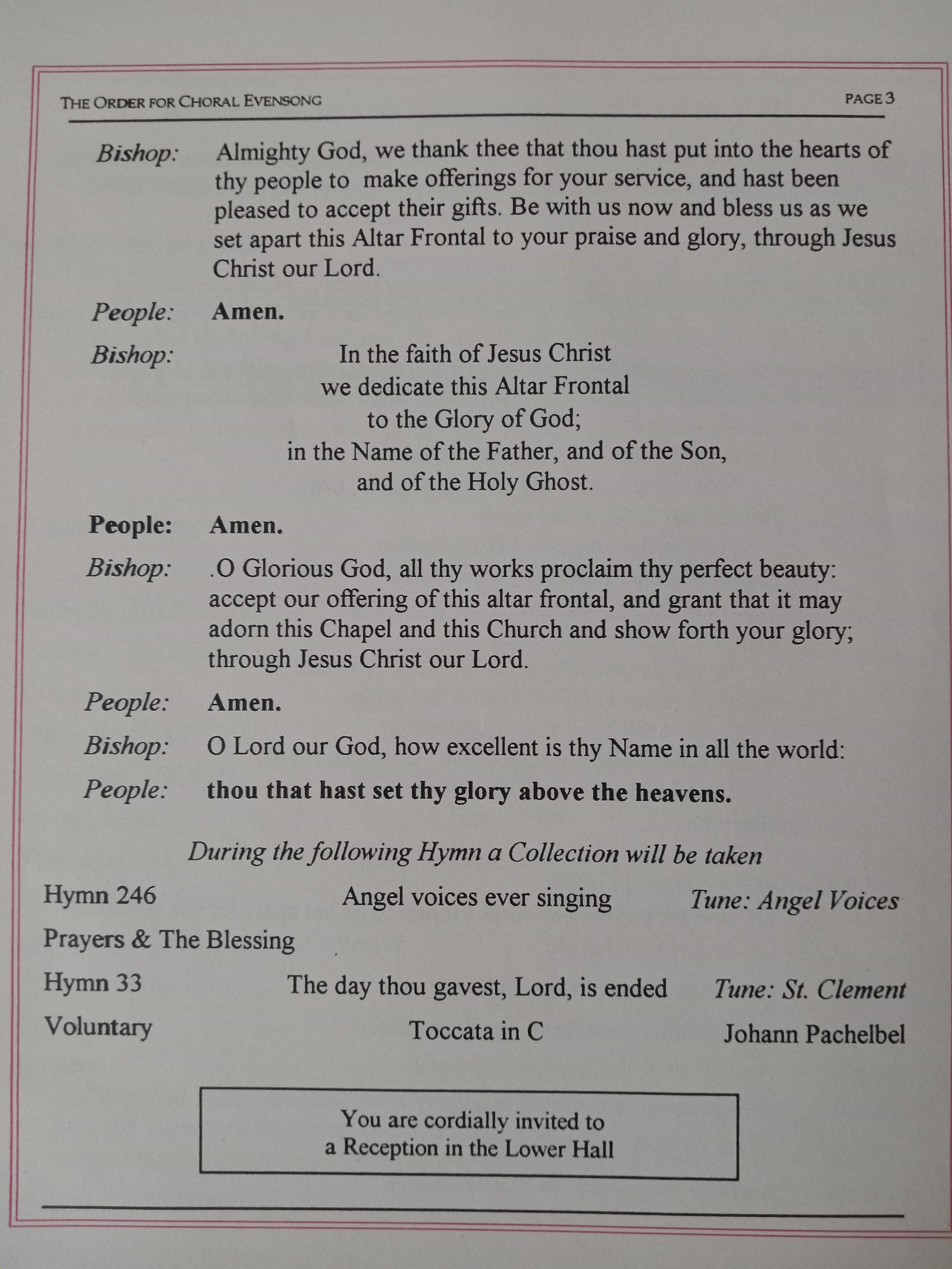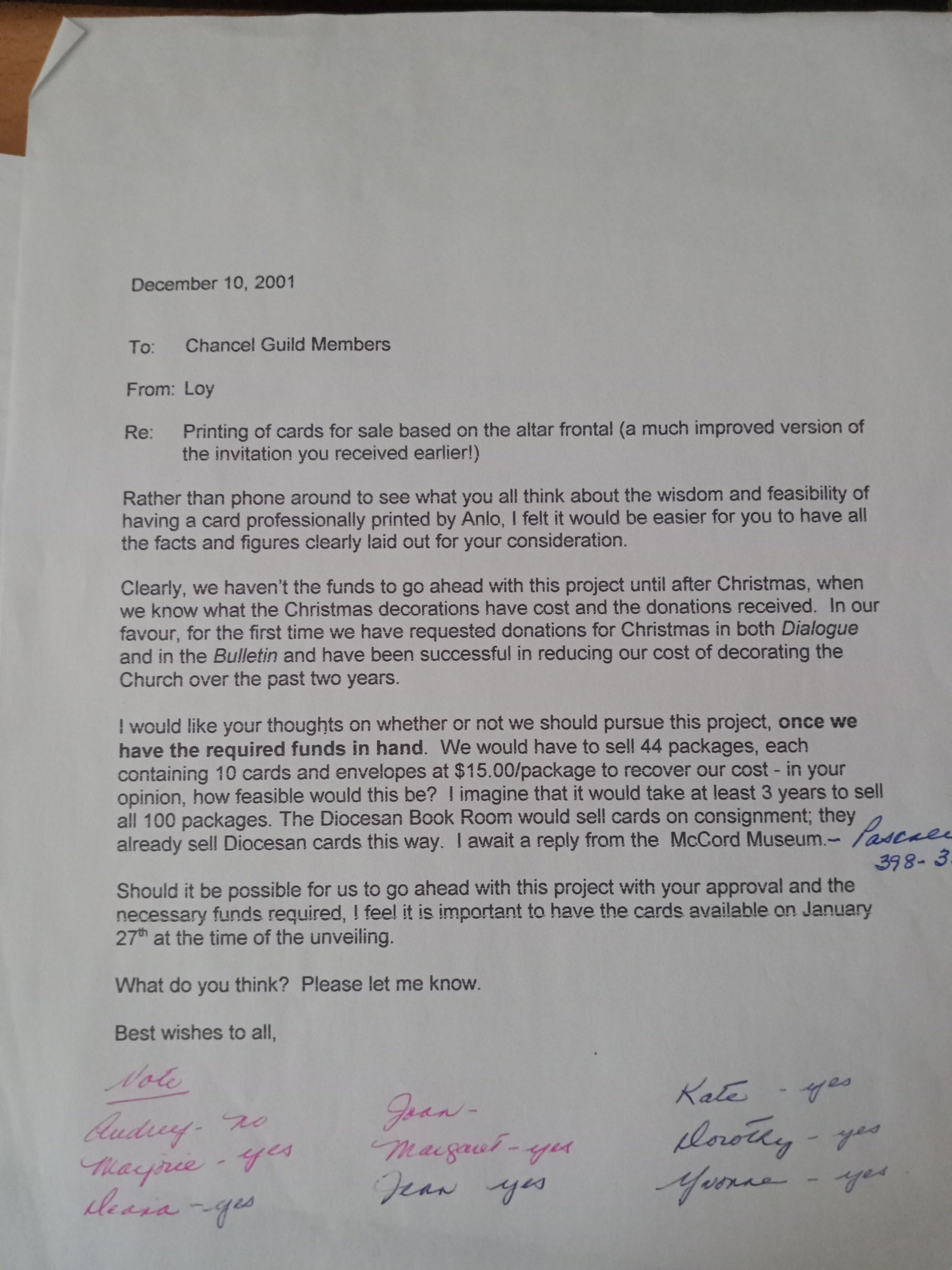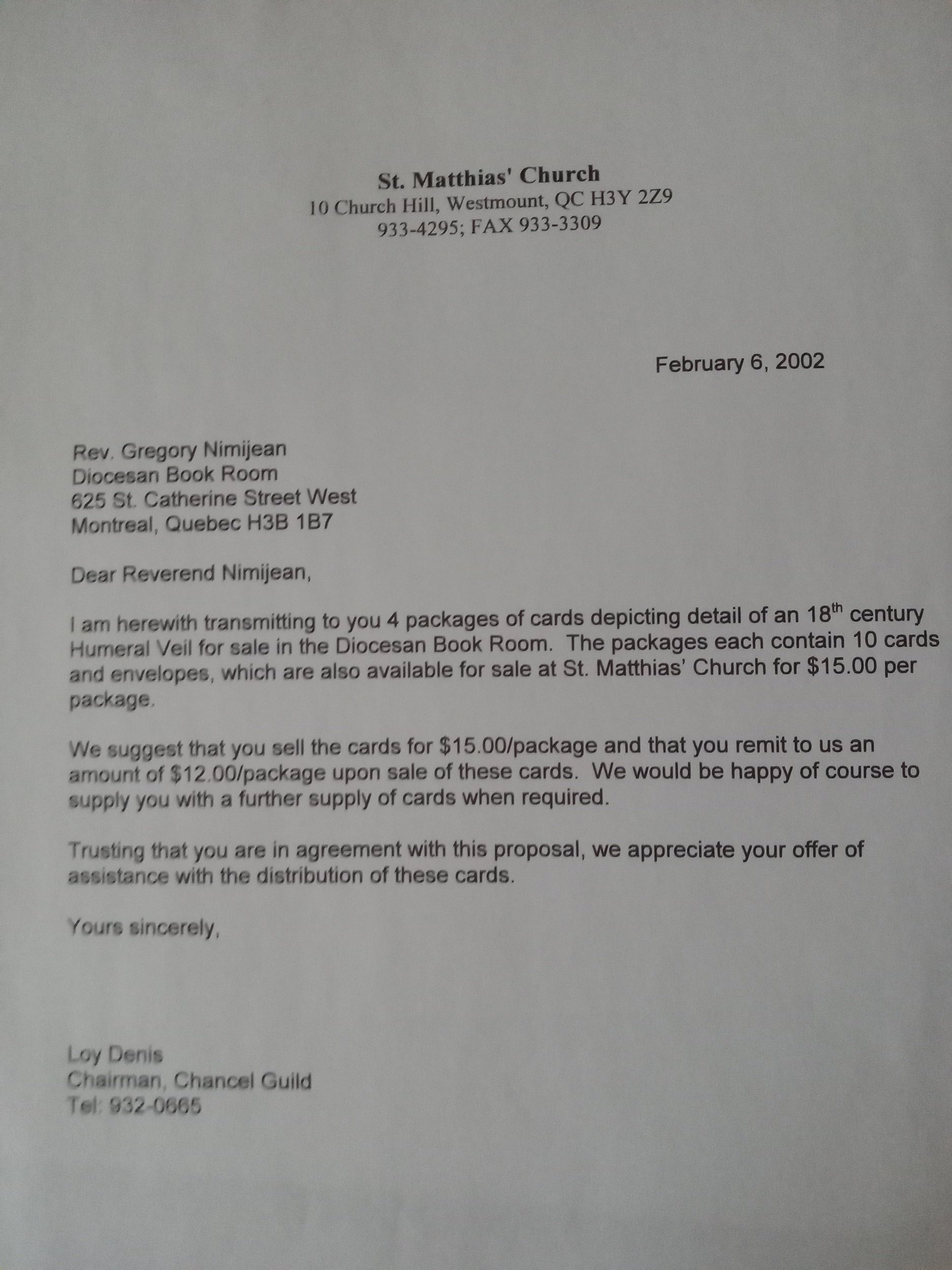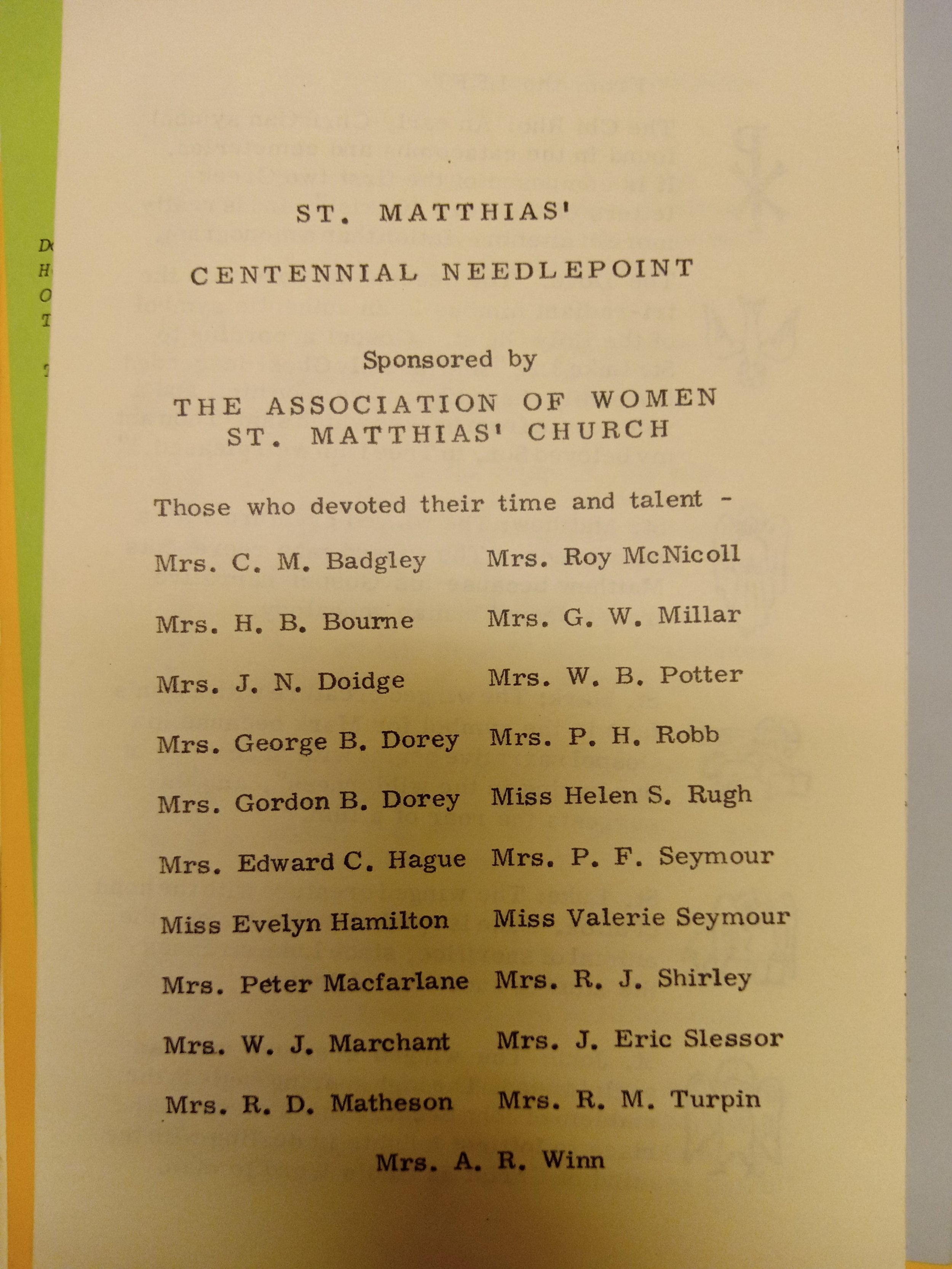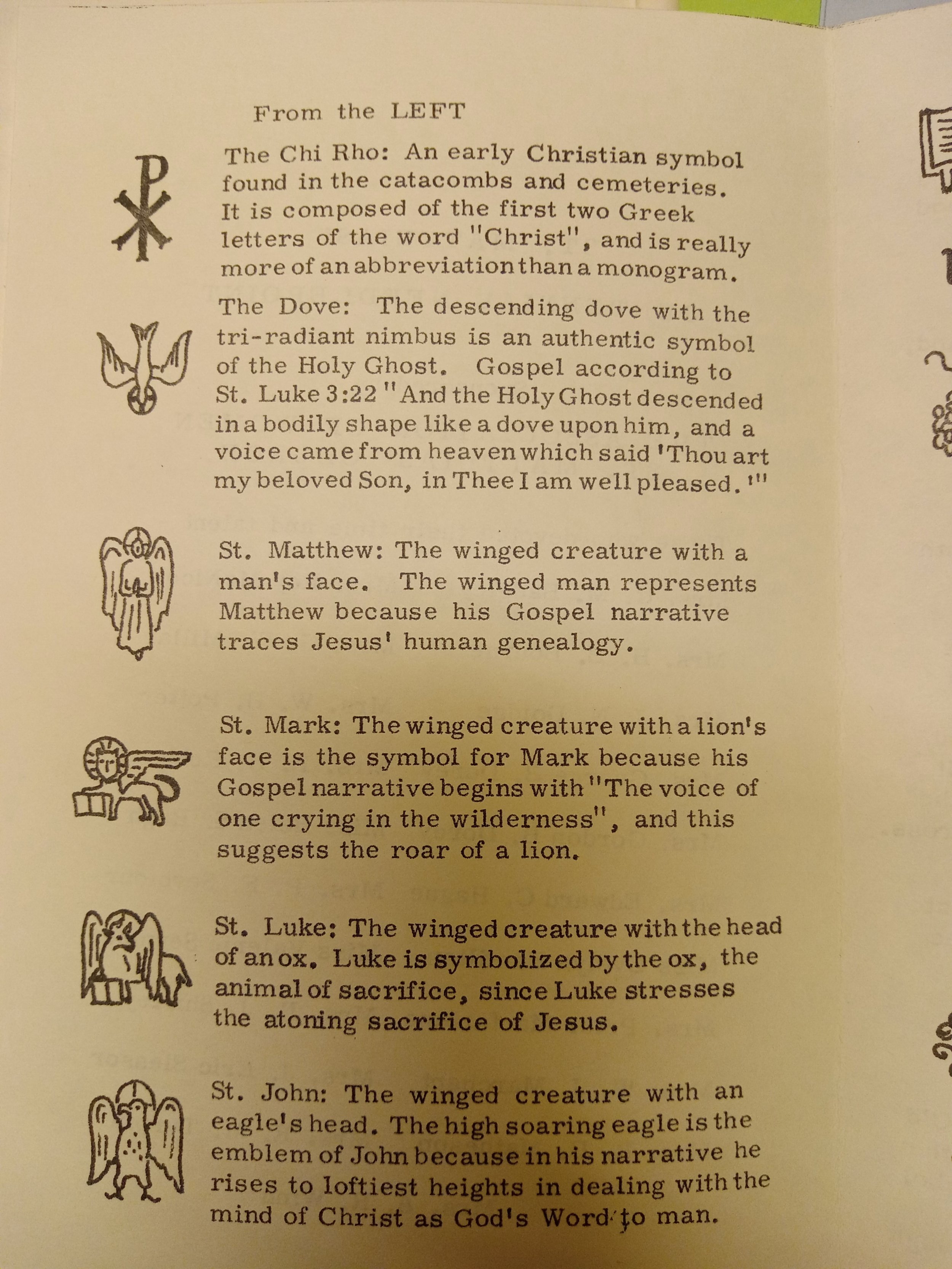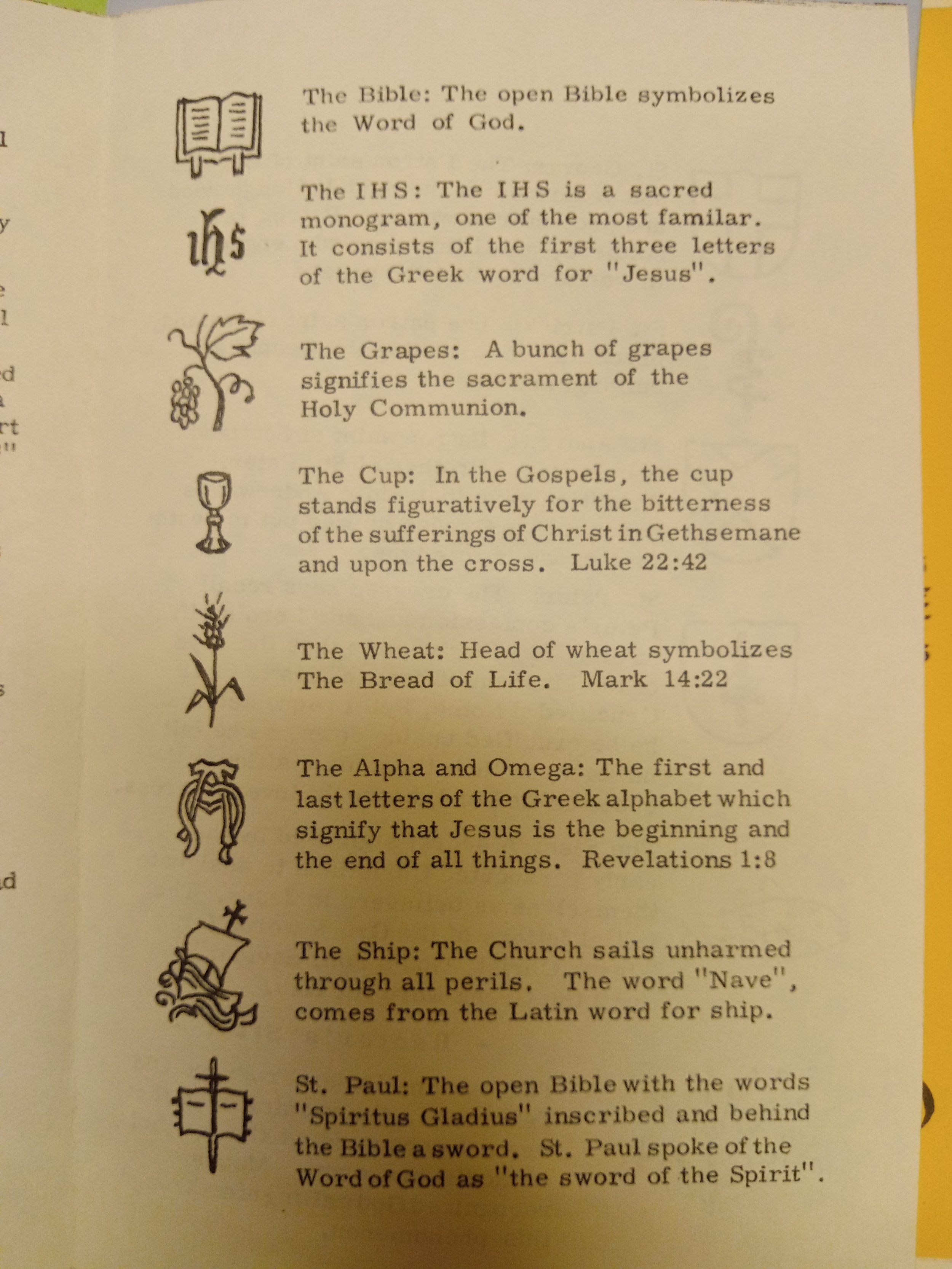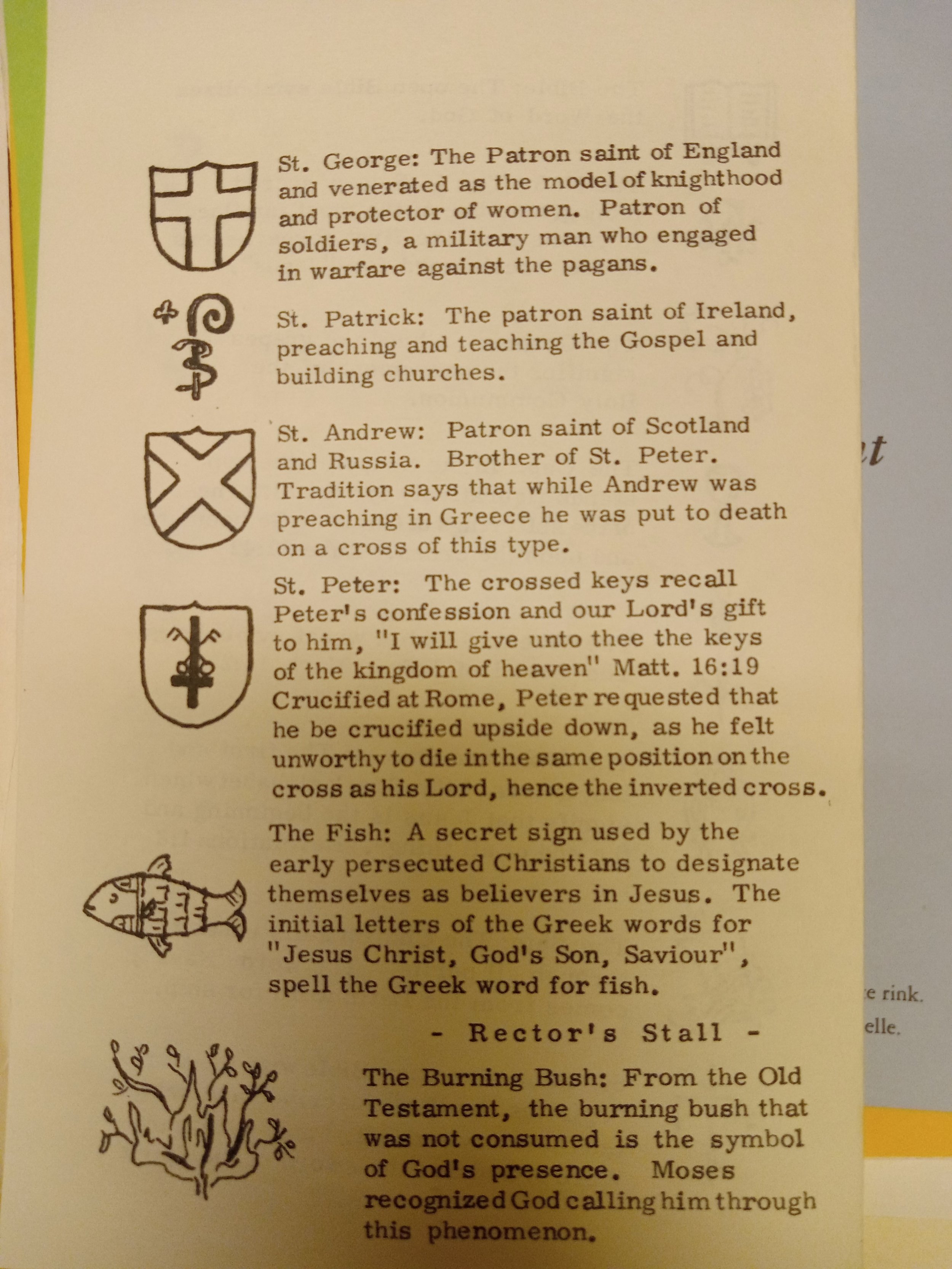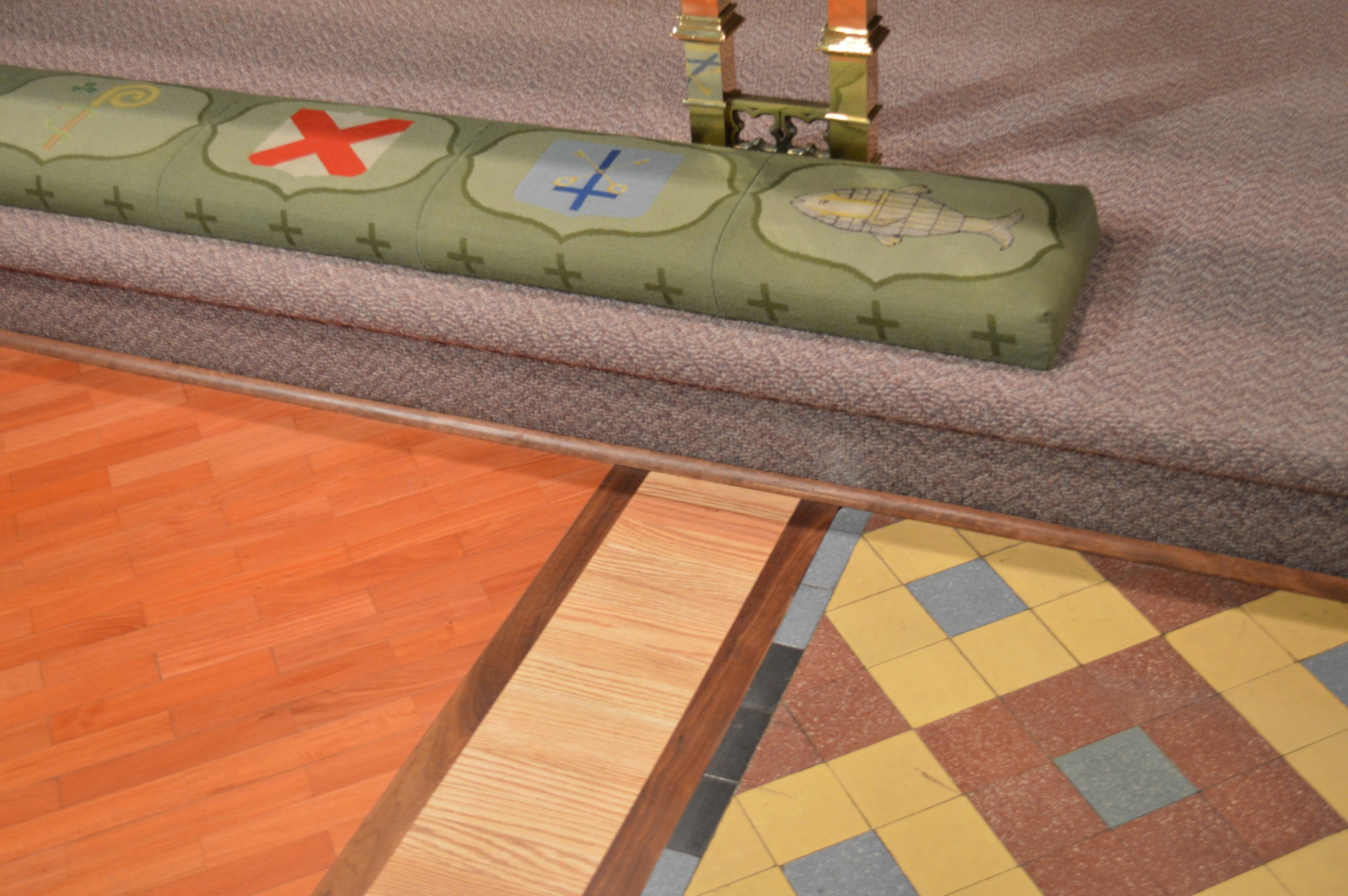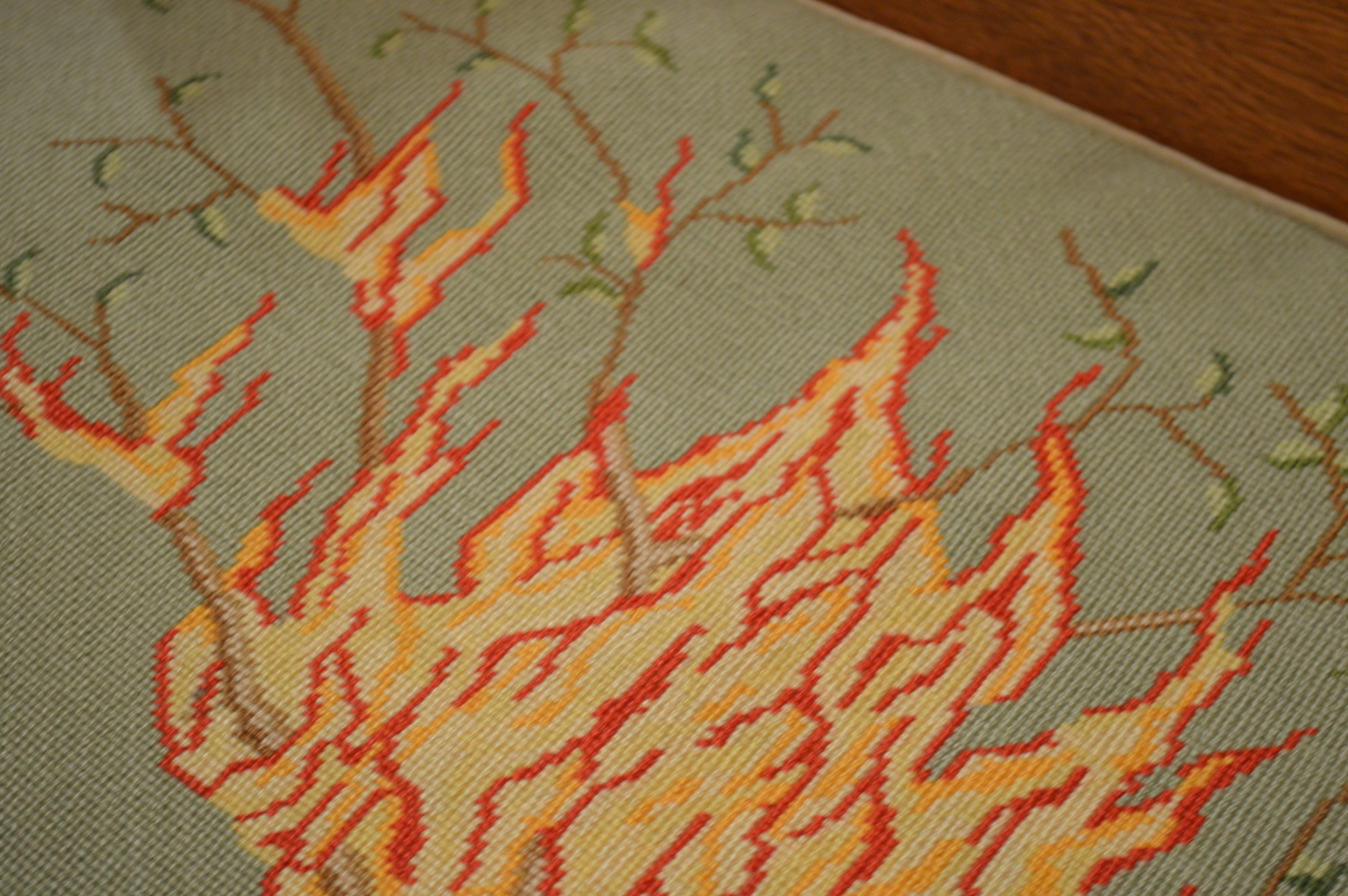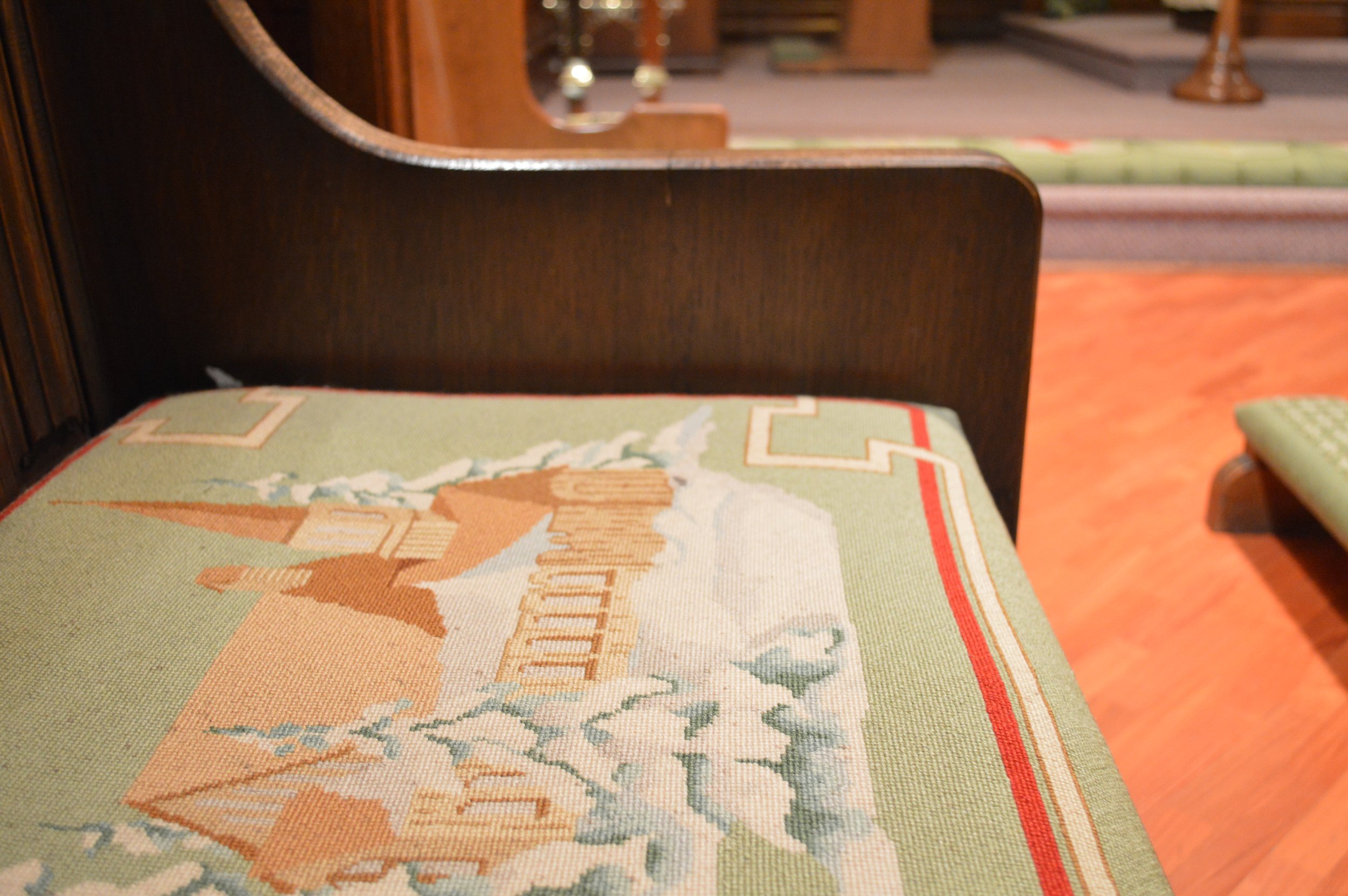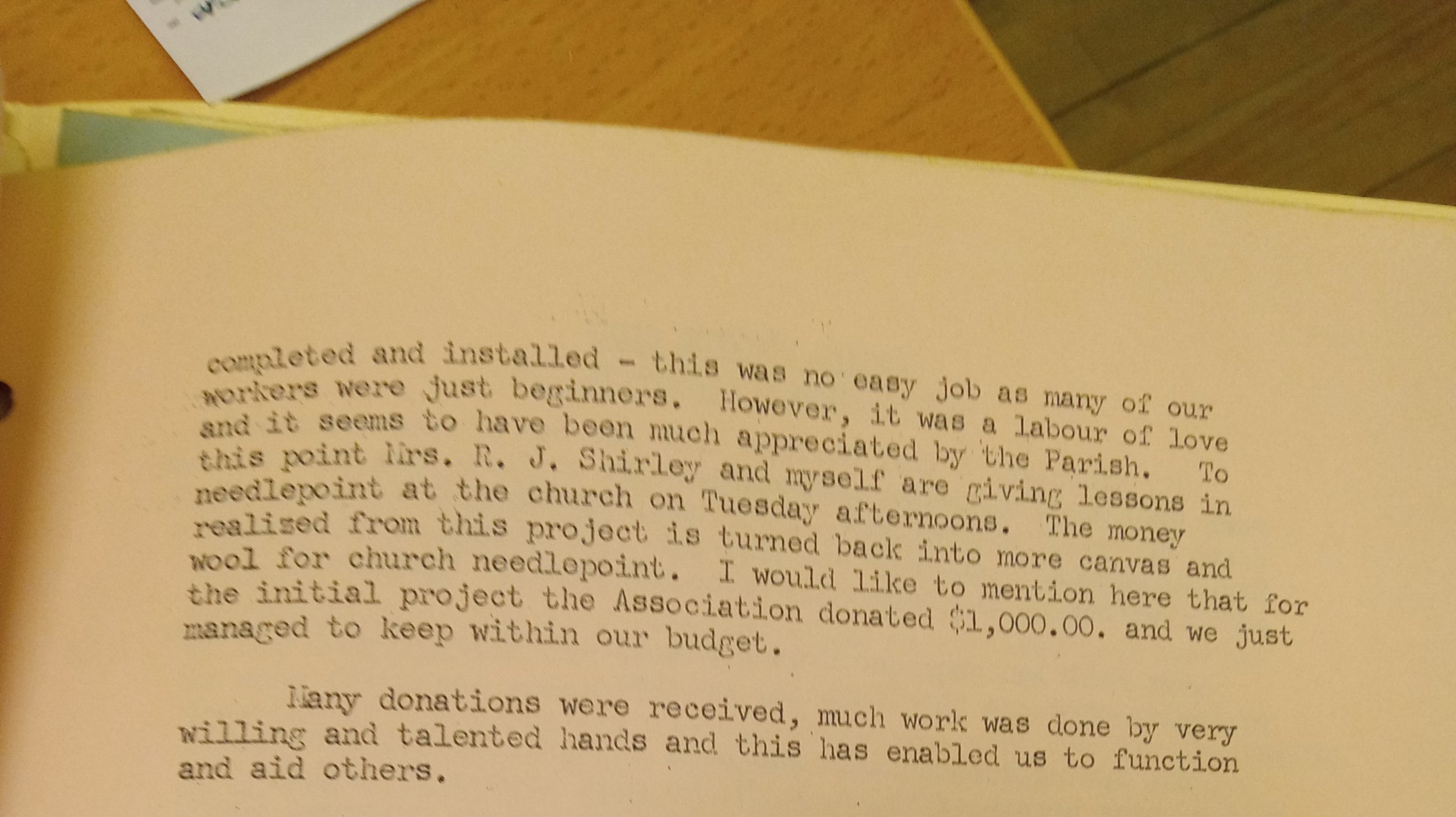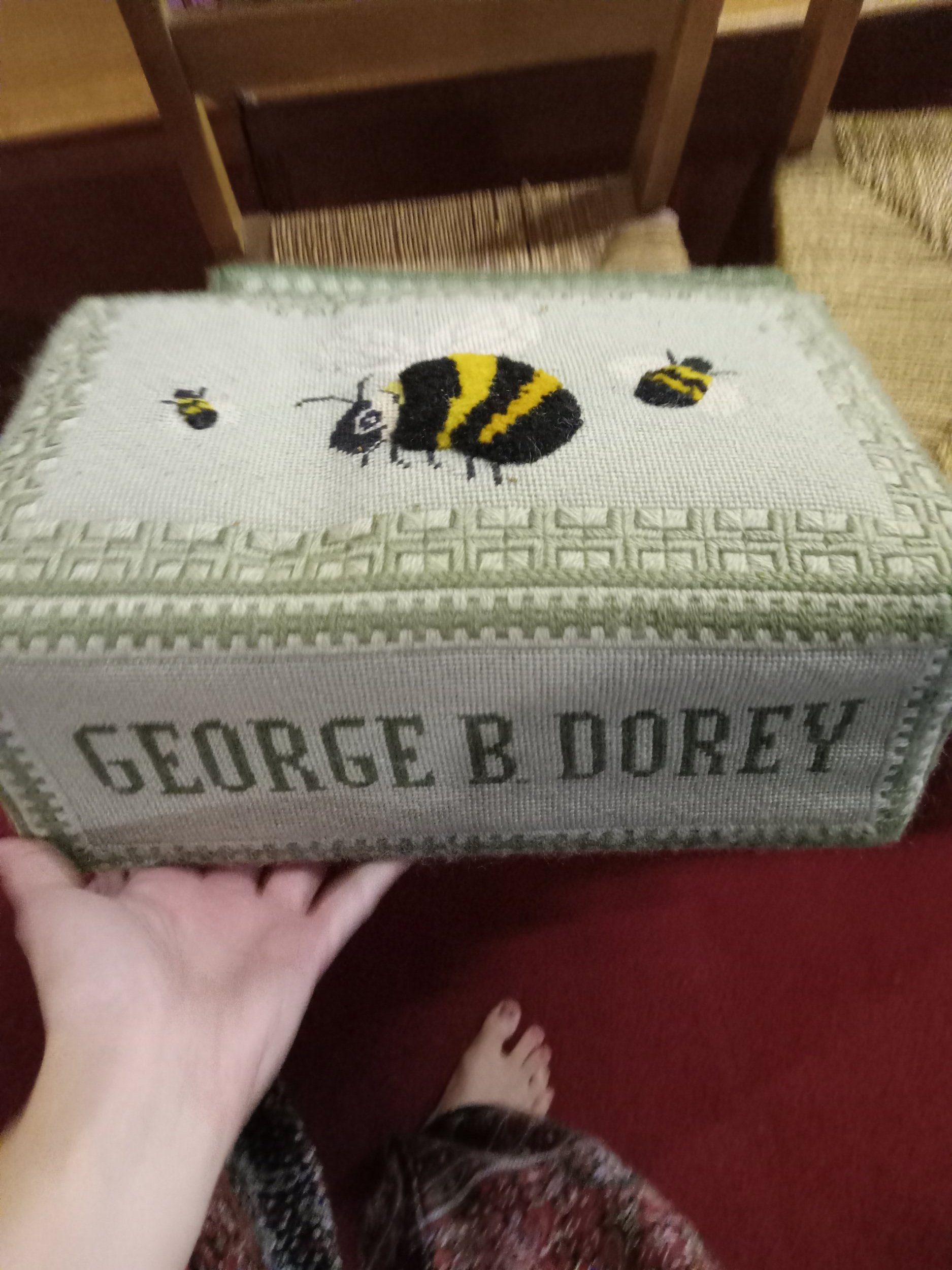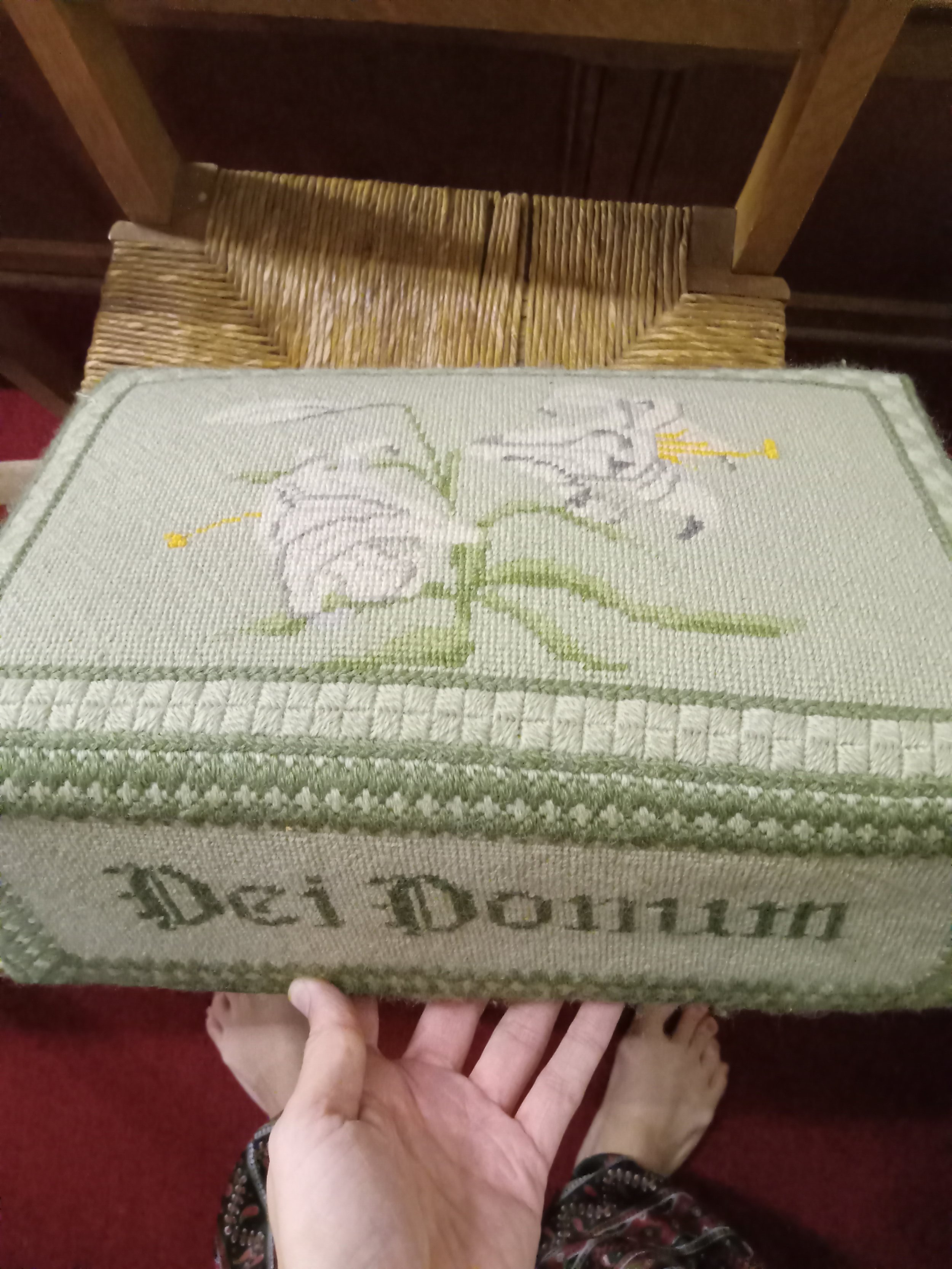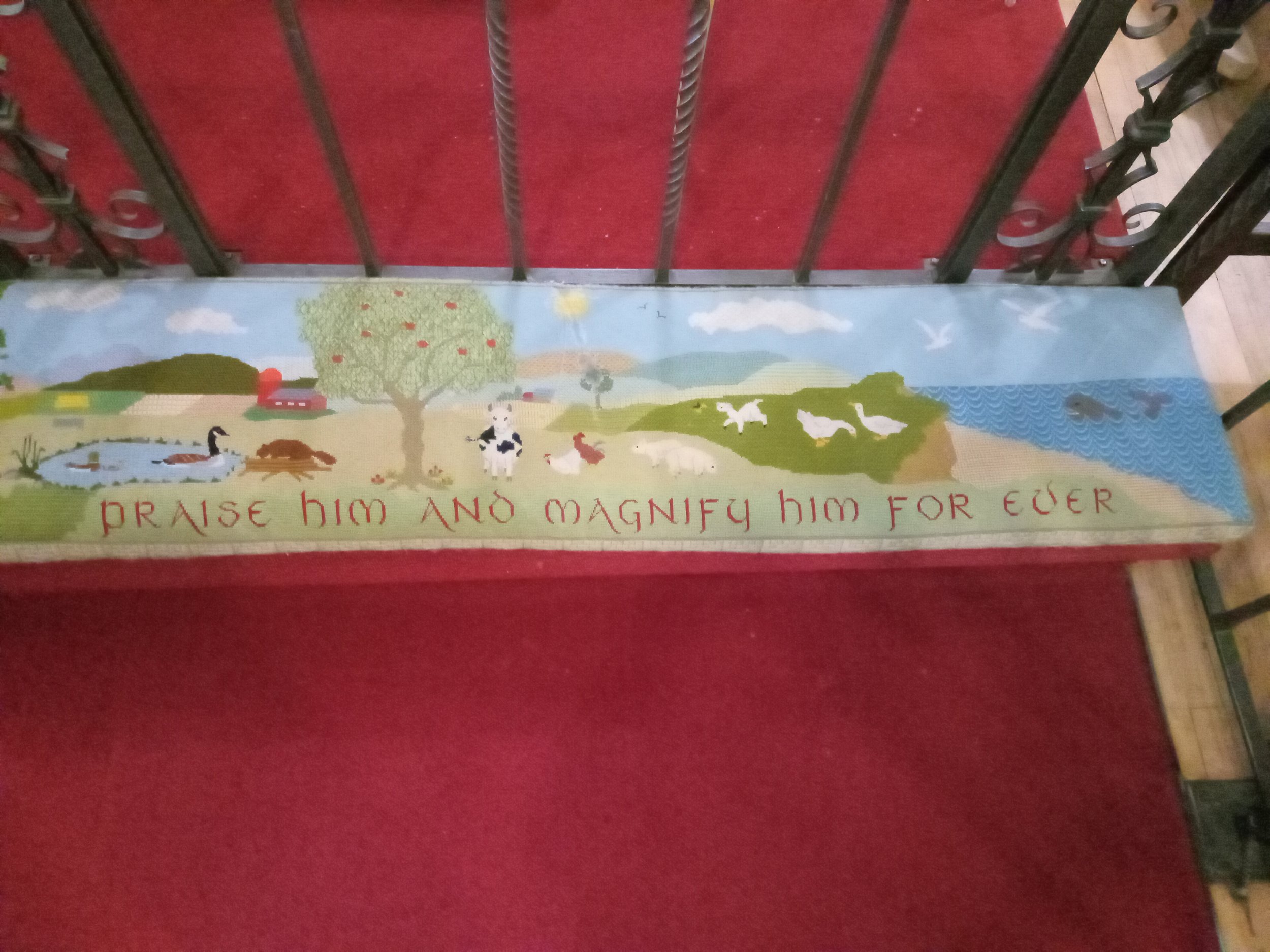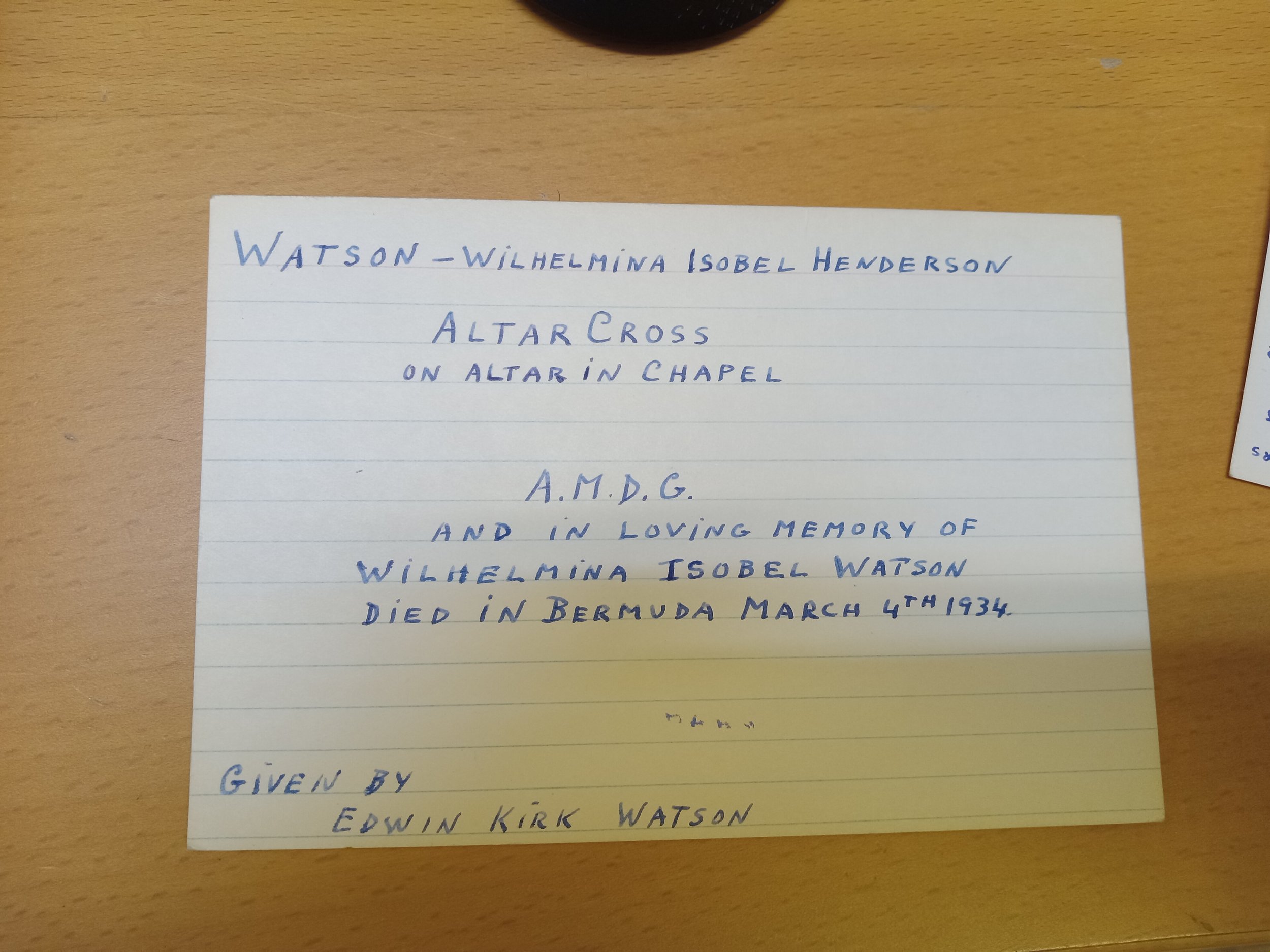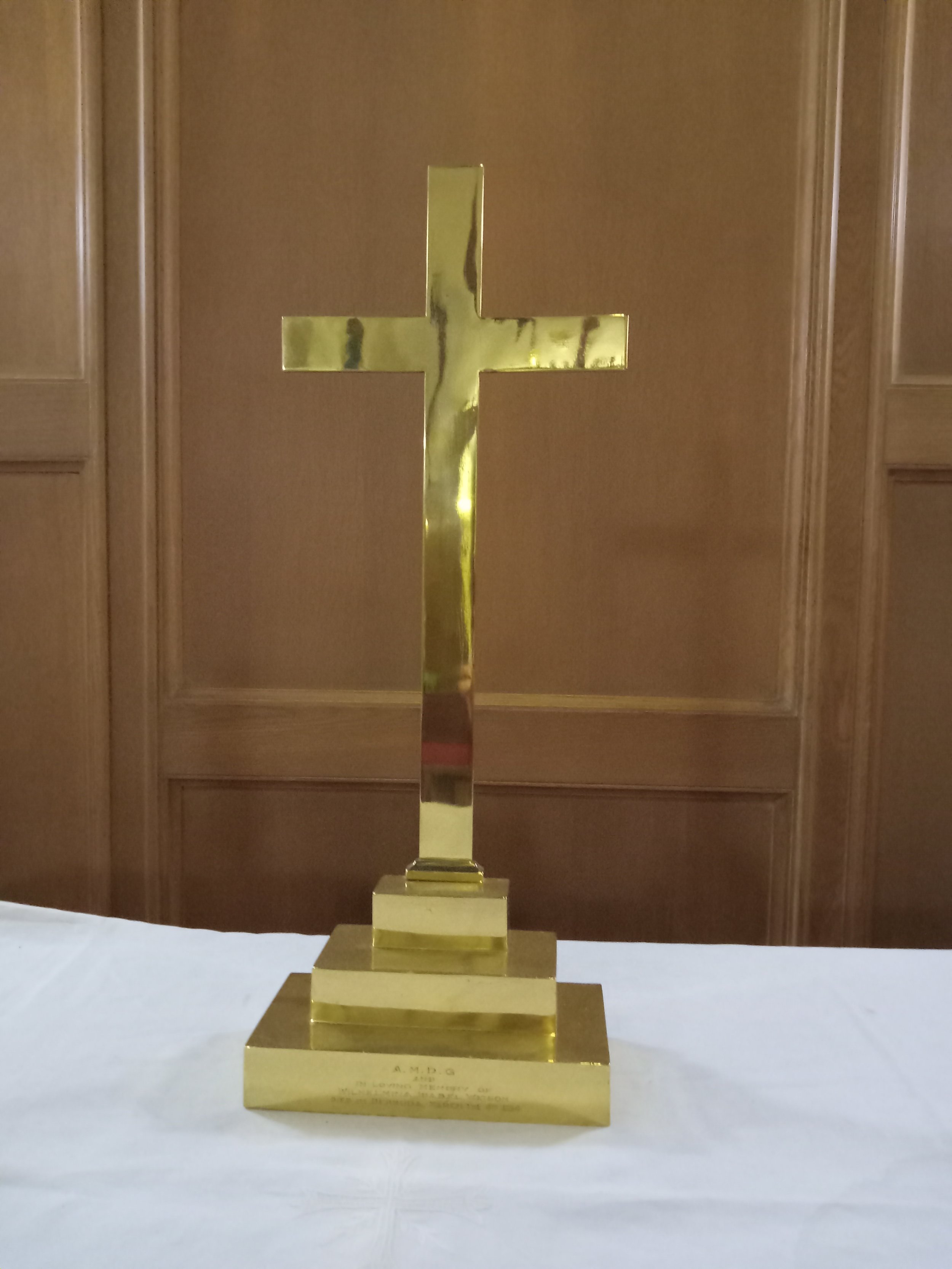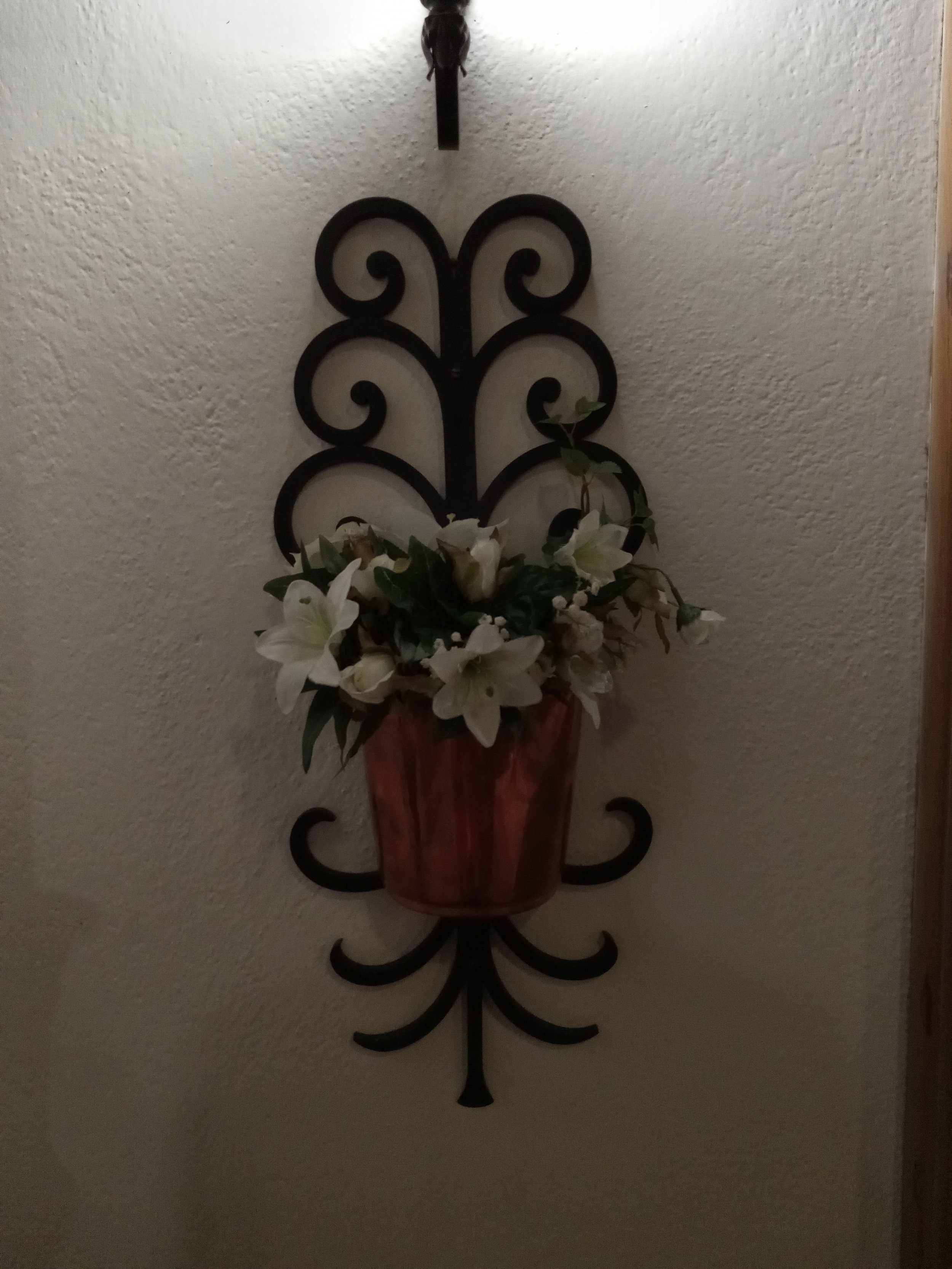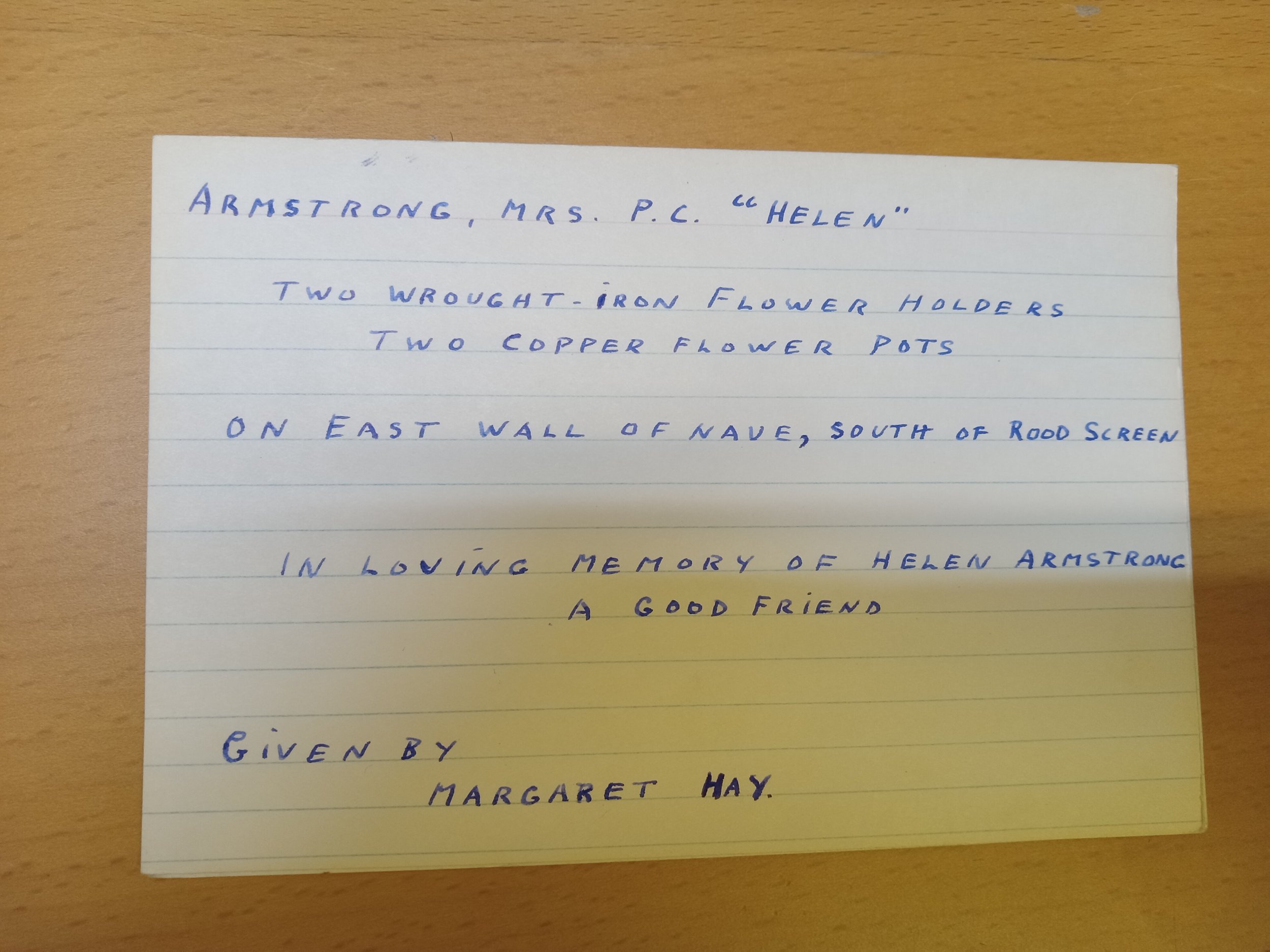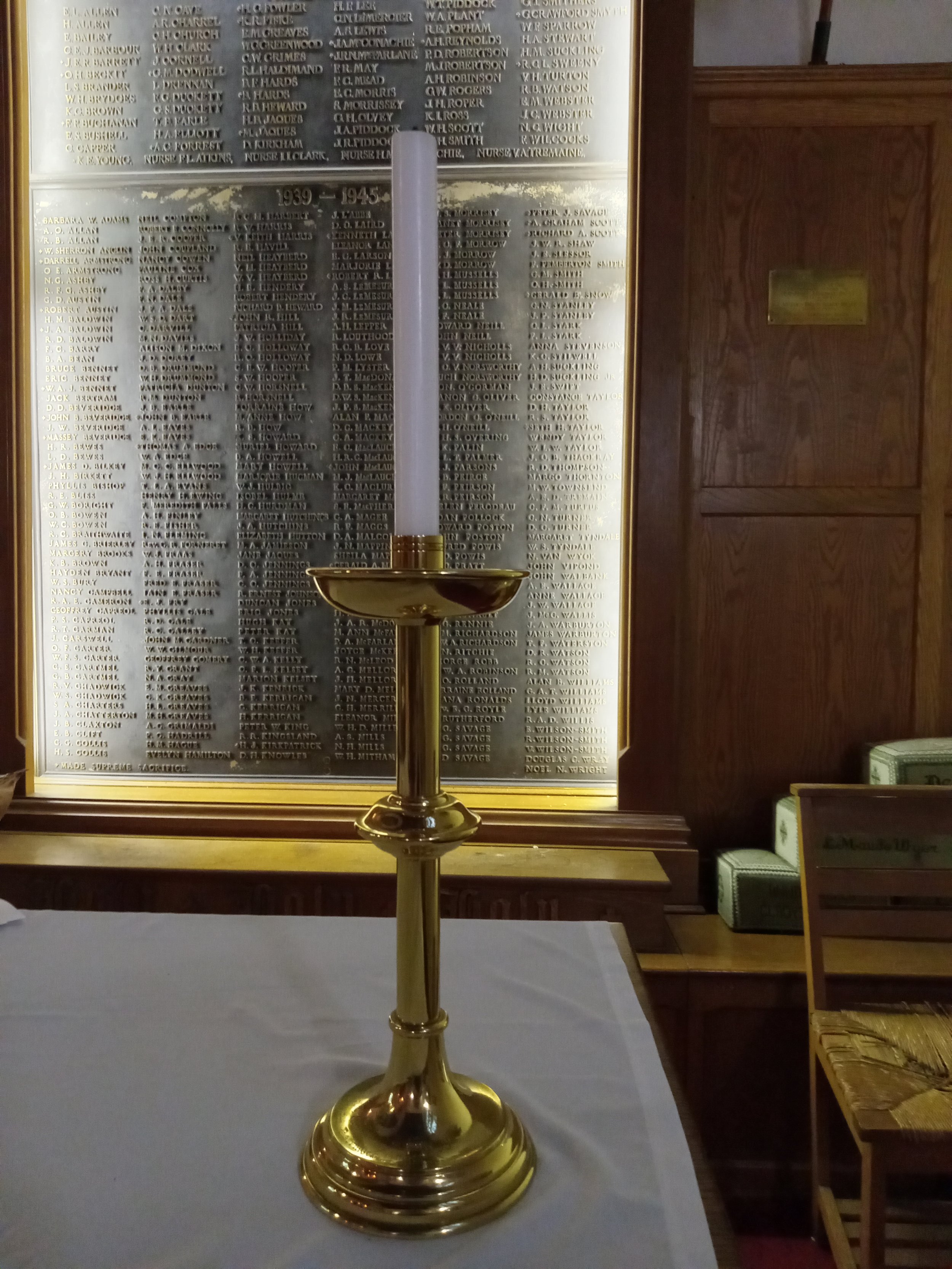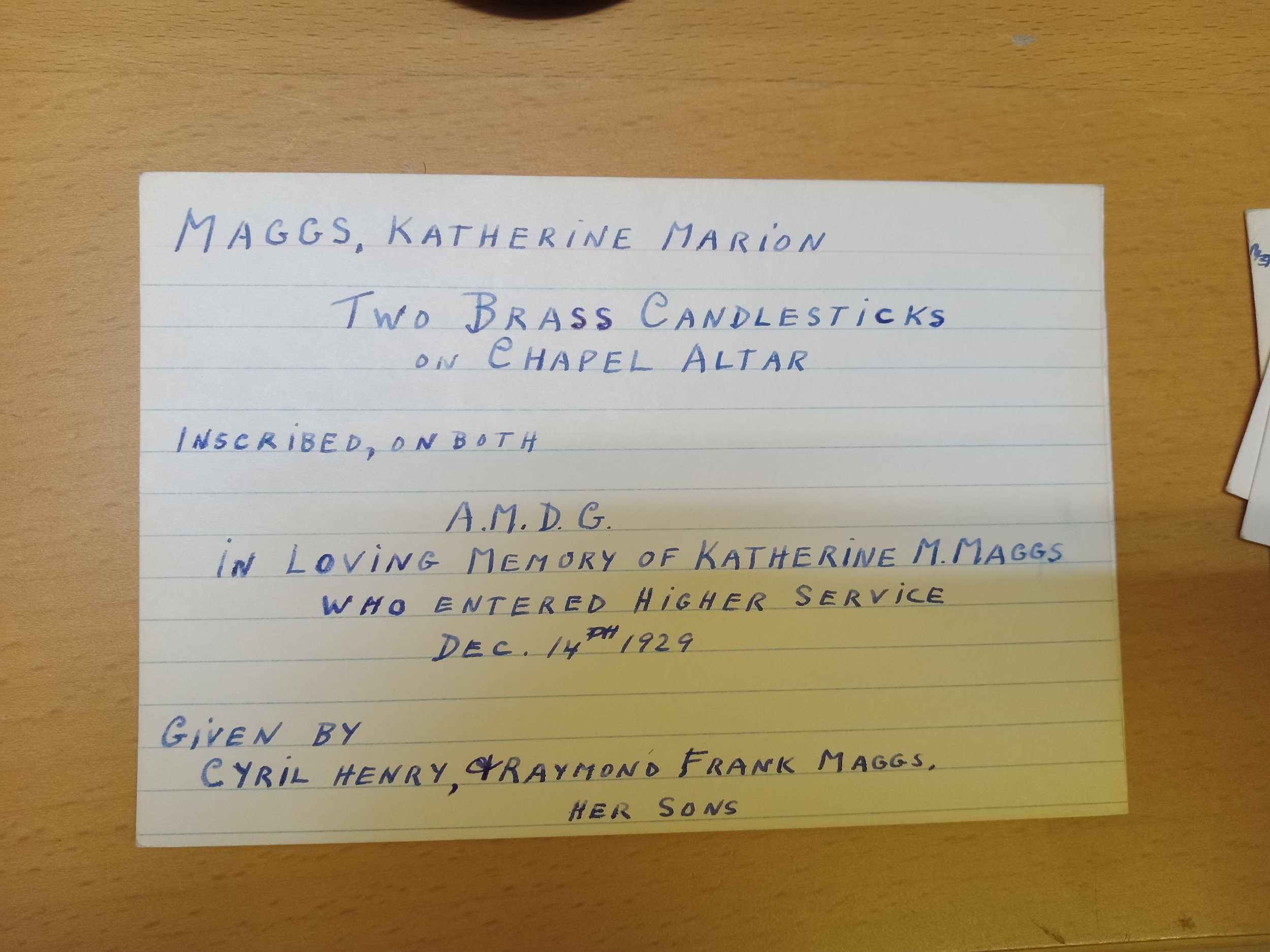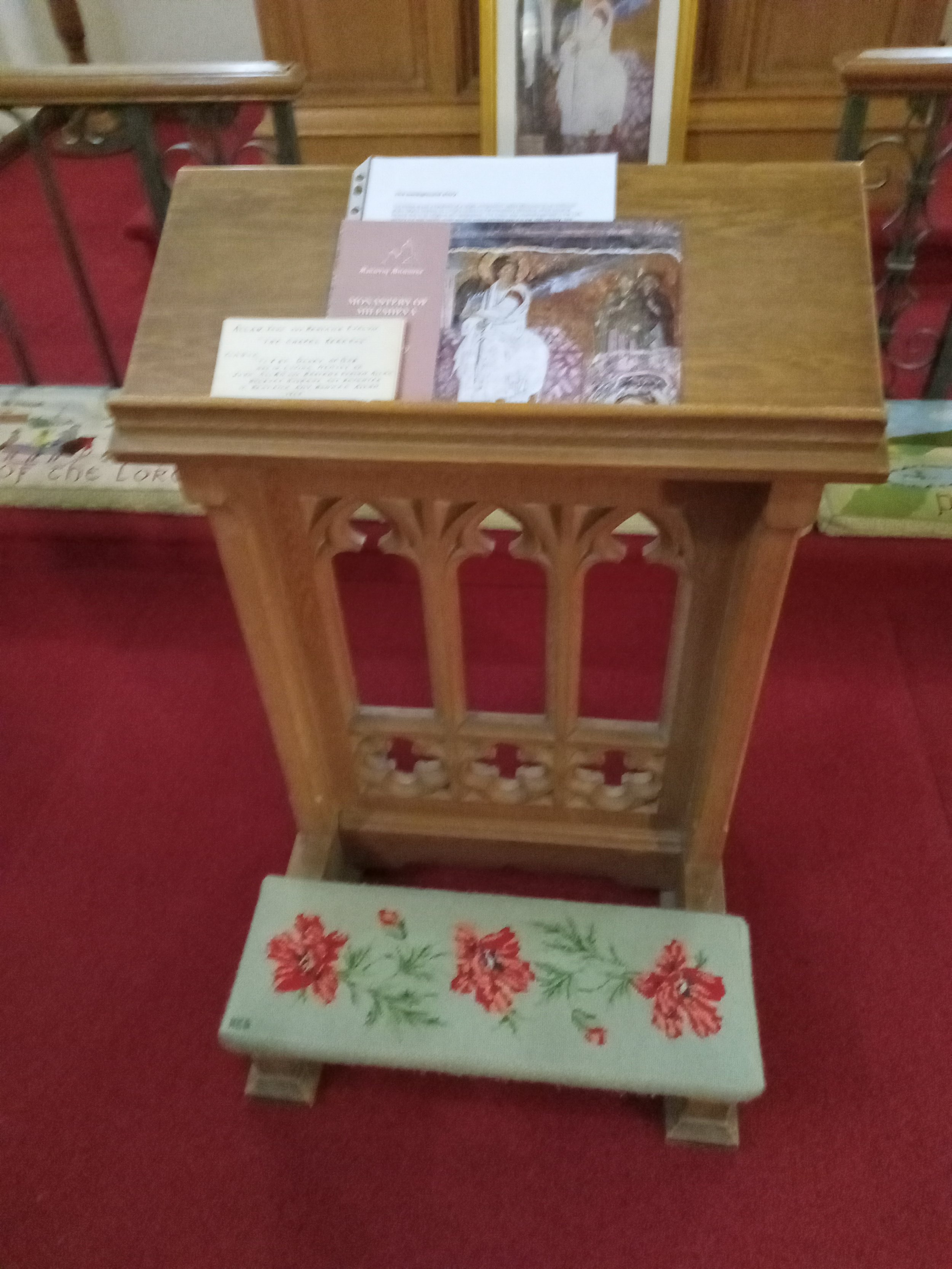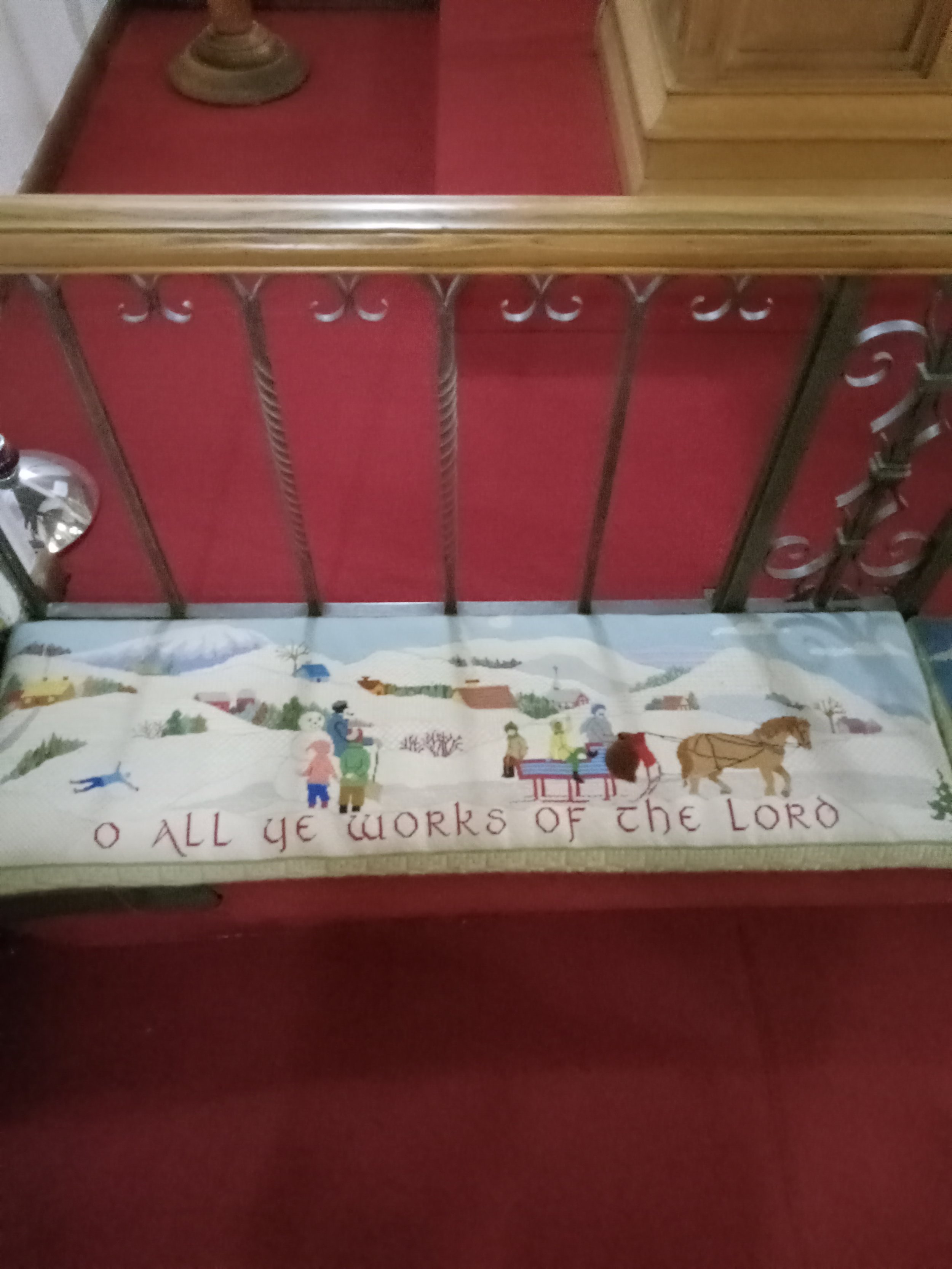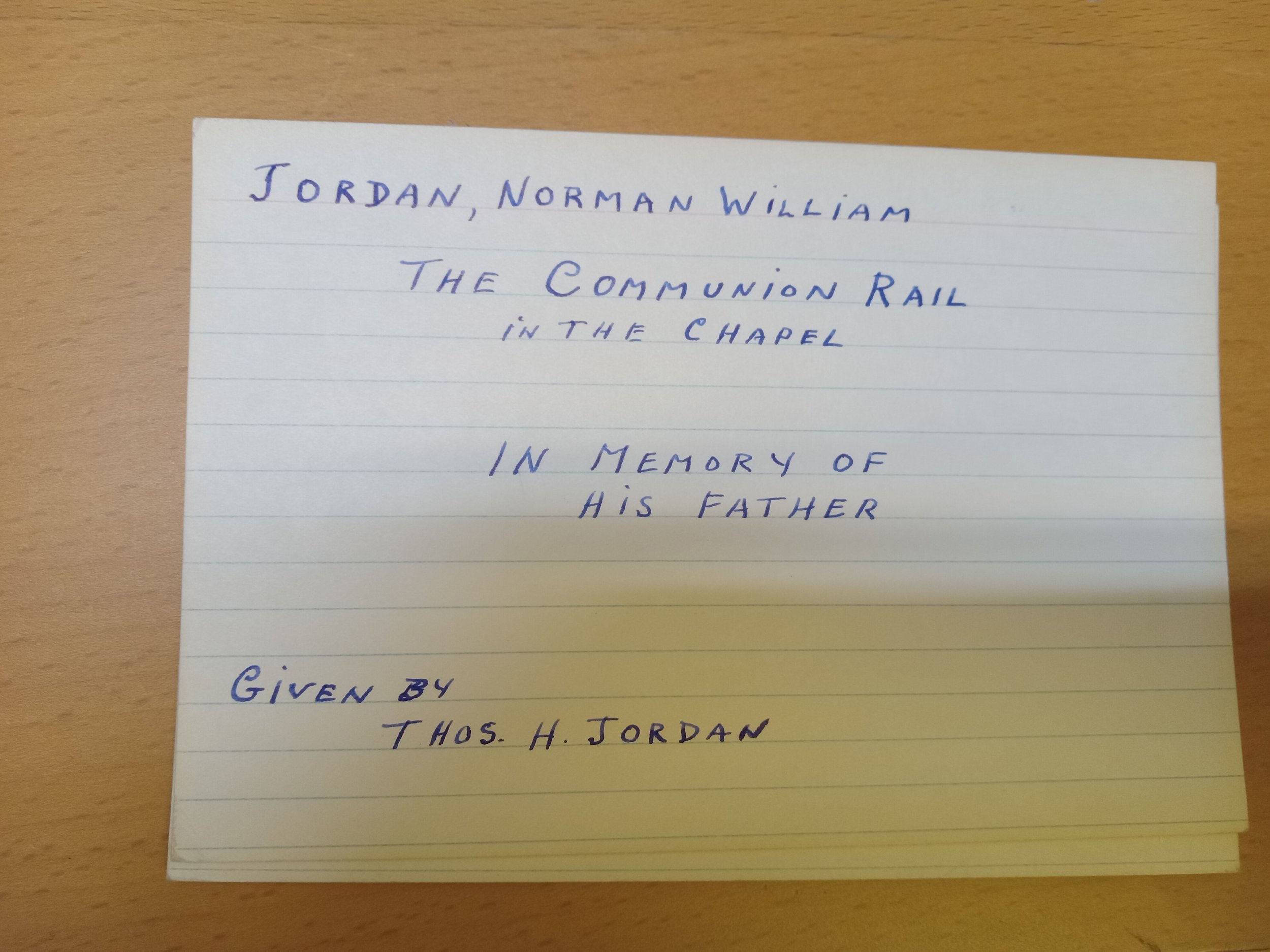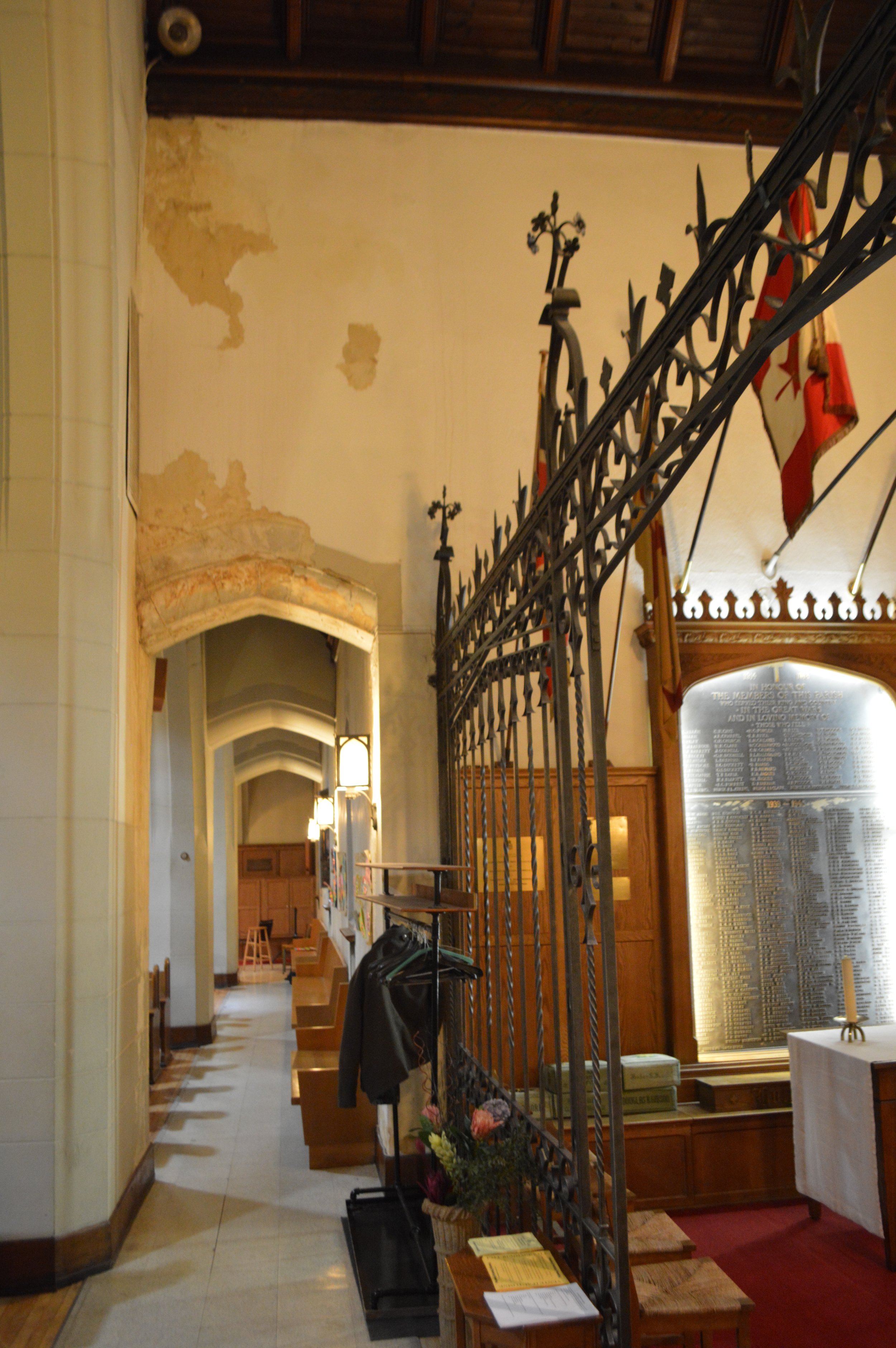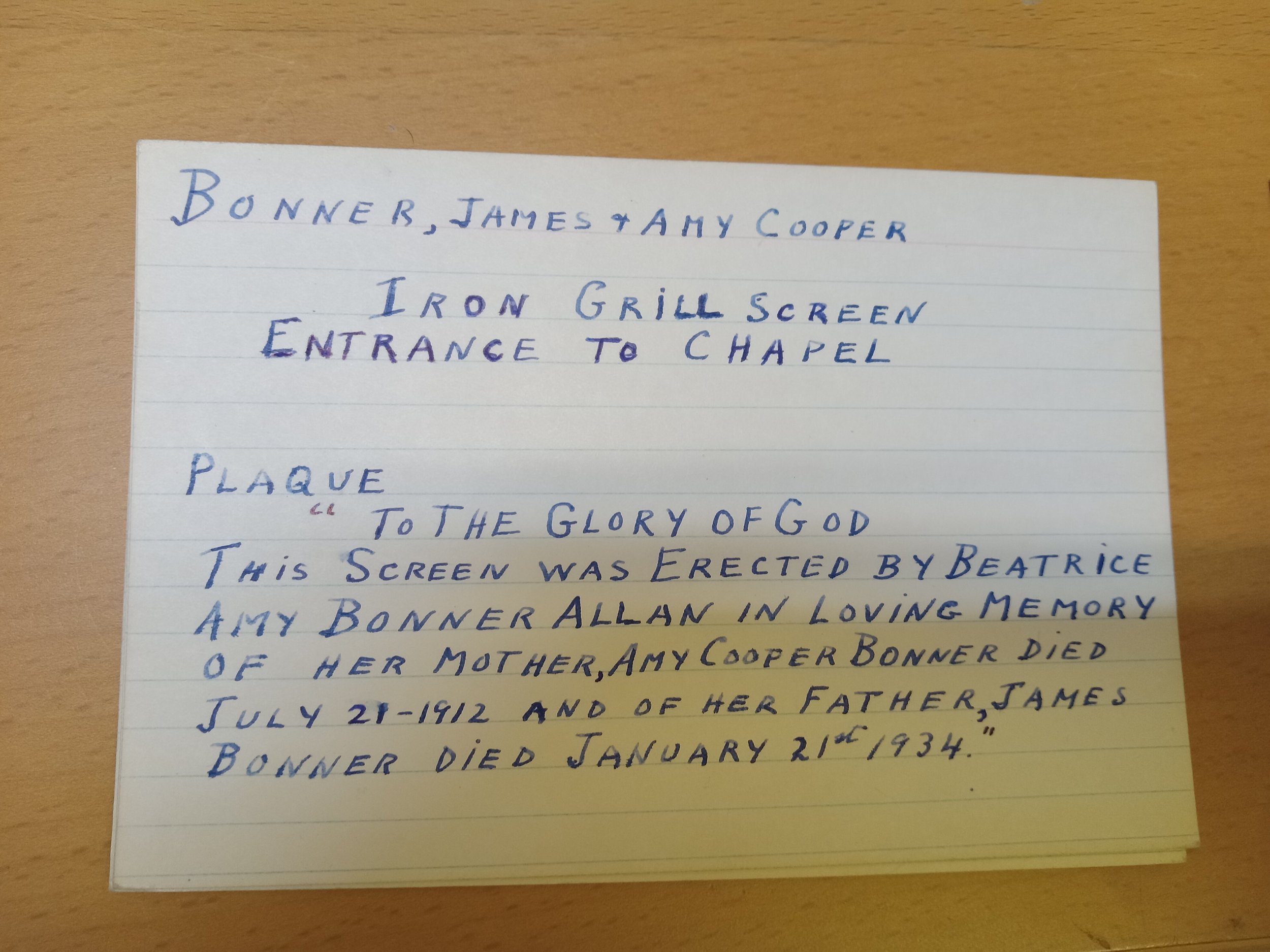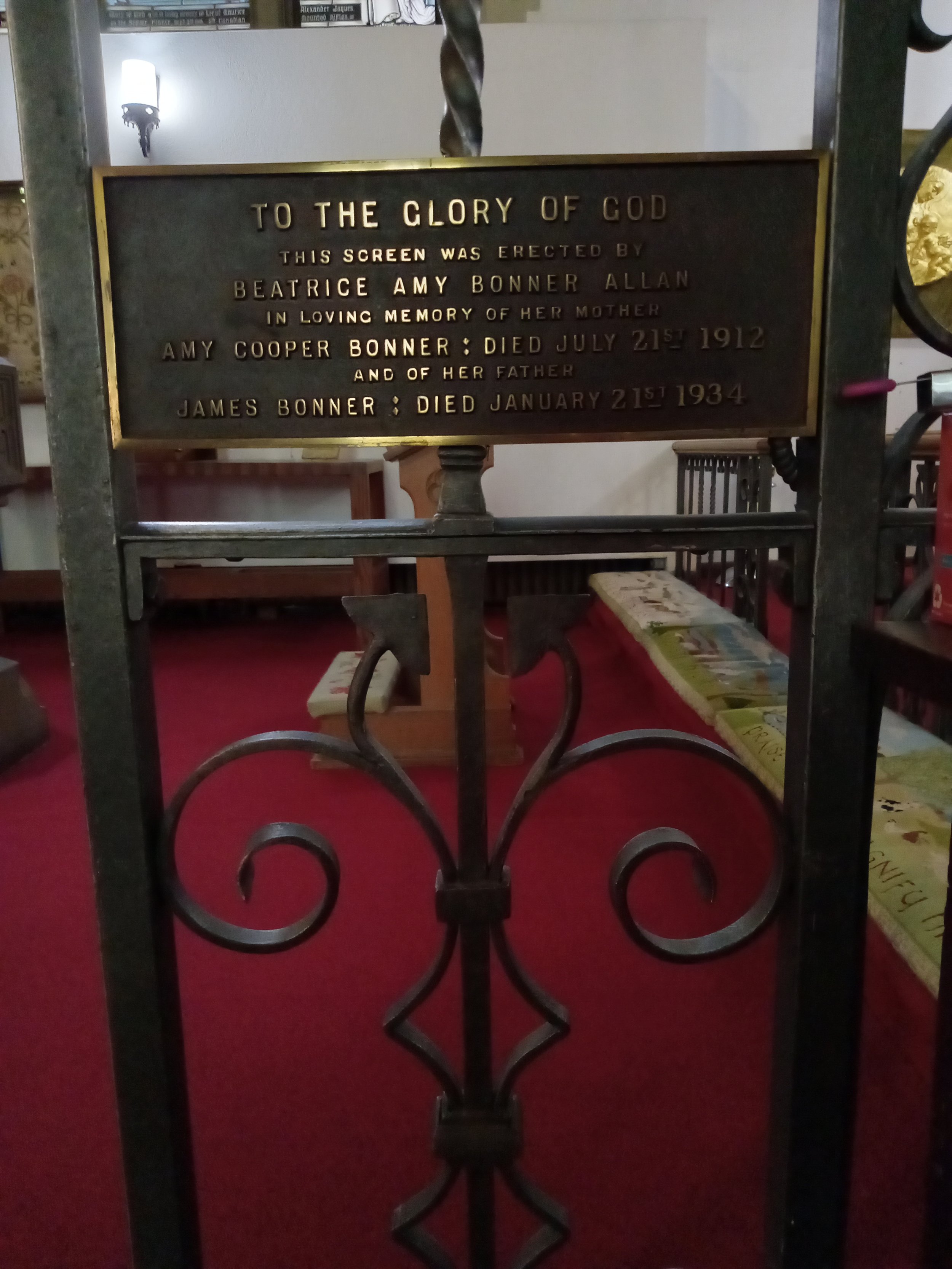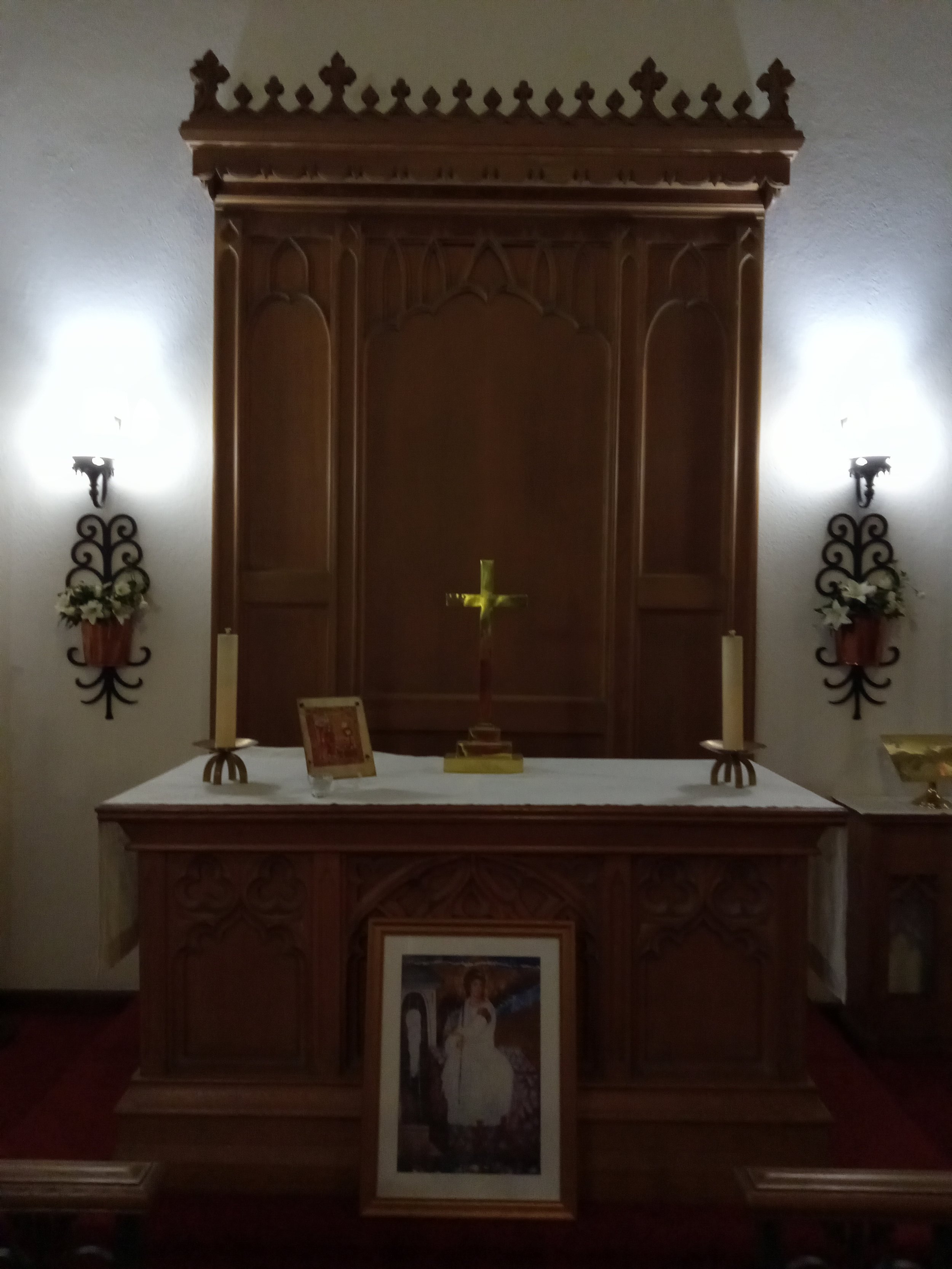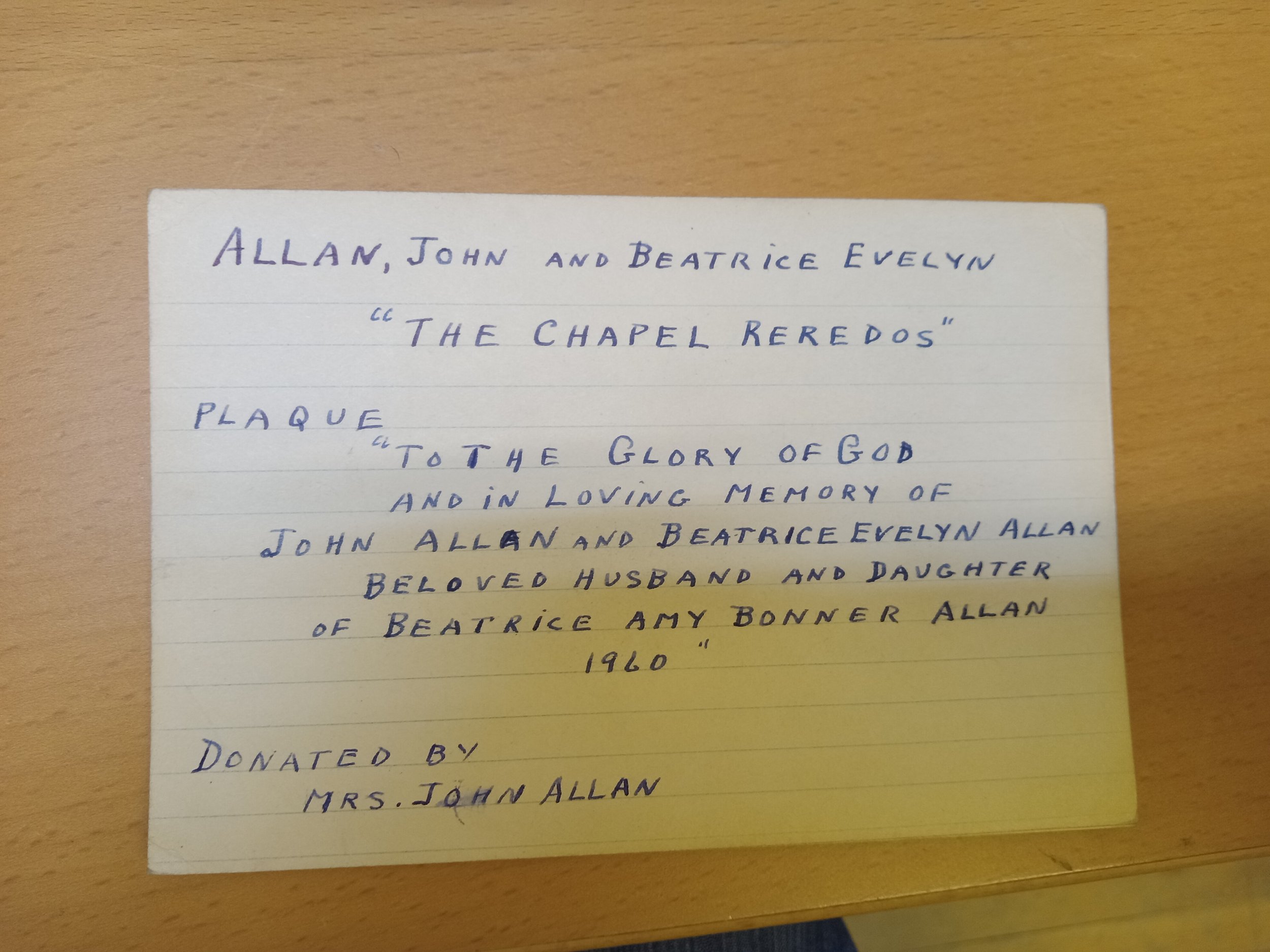October 15th: Dressing the Chapel
St. Matthias’ was officially founded as a mission of St. George’s, Place du Canada, in 1873, which means our community is 150 this year! For the next 12 months, we’ll be diving into the archives to shine the spotlight on particularly interesting parts of our history.
Before the War Memorial was moved to the Memorial Chapel in the North Transept, there was a much less military bent to the chapel’s overall décor. But the differences are not really all that major: after all, the chapel was built as a memorial to all members of the parish who had departed this life. This tradition has continued since the chapel’s completion in the 1930s, from the placement of the old church’s altar to the moving of the baptismal font. All of the furnishings of the chapel, big and small, have memorial stories to tell.
The Altar Frontal
This framed work of liturgical embroidery is almost certainly the oldest thing in St. Matthias. Eva Burnham, who restored it in 2001 at the behest of the Chancel Guild (led by then-president Loy Denis), estimated that it had initially been a humeral veil made between 150 and 1755 in England or France. The work was probably for a Roman Catholic church, done by male embroiderers who were part of a professional guild. Humeral veils are massive, as the photos of the restored version show – they are designed to be worn around a priest’s shoulders and to come down the arms and cover the hands whenever the Eucharist is being carried from main altar to side chapel altar. It is unclear how or when St. Matthias’ acquired it, but at some point in its history, this humeral veil was cut into five sections. It was eventually resized to be an altar frontal for the altar that now stands in our Memorial Chapel.
Eva Burnham carefully unpicked this work and restored it to much of its former glory, and, per her recommendation, it was mounted in a protective frame. All of this work was paid for largely by the Estate of Elizabeth Newill, and by donations almost exclusively from members of the Chancel Guild. In January 2002, then-Bishop of Montreal, Andrew Hutchinson, blessed the restored pieces in a service that was so moving that a Grey Nun in attendance wrote the Chancel Guild a very touching letter. The Guild went on to turn images of the frontal into a fundraising effort, producing notecards that were sold, among other places, at the Diocesan Book Room.
The Centennial Needlework Project
The chapel doesn’t only host the embroidery feats of male professionals, but of female amateurs as well! In 1973, the Association of Women, an organisation with a long history of ambitious projects, launched perhaps its most ambitious project ever, costing the Association $1000 (about $6000 today). The Centennial Needlework Project took almost two years to complete; then-Association President Nancy Dorey described it as “no easy job, as many of our workers were just beginners.” But it was so successful that the Association continued to produce needlework for the church for quite some time! Nancy and Mrs. R. J. Shirley even began to give needlepoint lessons in the church as a result of the interest it generated, using the fees they charged to buy more canvas and wool for church needlepoint projects.
The main body of the centennial work is actually up in the chancel – the altar rail kneeling pad and the burning bush image on the rector’s seat cushion, both of which were dedicated by the Primate of the Anglican Church of Canada. The chapel furnishings are the product of the ongoing project: the altar rail kneeling pad and the prie-dieu for weddings were dedicated in February 1978 along with a few more chancel furnishings, and our two fearless embroideresses would continue on in 1979 to plan and lead the execution of the single embroidered cushions, stacked in the back here, as memorials.
Small Treasures
The memorials do not end with major works. As with many parts of the church, our card catalogue tells the stories of pieces that might be overlooked by that nevertheless carry the memories of the people for whom they were dedicated. The altar cross is dedicated to the memory of Wilhelmina Isobel Henderson Watson, who died in Bermuda in 1934, by her husband, former Rector’s Warden Edwin Kirk Watson. Edwin himself passed away just four years later, in 1938.
Margaret Hay dedicated the two copper flower pots with their wrought-iron holders in memory of Helen Armstrong, “a good friend.” Helen, who was married to Philip Christian Armstrong, one of St. Matthias’ lay Synod delegates, had worked with Margaret in the Women’s Association in the 1940s and 1950s.
Katherine Marion Maggs, “who entered higher service Dec. 14th 1929,” was remembered by her sons Cyril Henry and Raymond Frank in the brass candlesticks on the chapel altar. Katerina Mariana Benevenuti, as she was known before married Harry Reginald Maggs, was a descendent of a Florentine sculptor who had been a contemporary of Michelangelo. She died while visiting her sons in Montreal, and may have inspired them to their own “higher service,” as the year after her death, Cyril help found the Scout Troupe and Wolf Cub Pack at St. Matthias’.
Larger Treasures
The prie dieu in the chapel (later embellished as part of the Needlepoint Project!) was given in memory of Mary Barnard Earle Popham by her husband, Harry Russell Popham, and their children, in 1934. Mary and Harry had been married in St. Matthias’ in 1886, and both were from old Montreal families. Mary’s father had built the stone house at the corner of Cedar and de la Montagne, and owned much of the land around the house. Harry built on his father-in-law’s land, and he and Mary baptised six children at St. Matthias’. The eldest, Russell Earle, is among the named on our honour roll; he died in November 1929. The second-youngest, Dorothy, had two of her children baptised at St. Matthias’, and is the informant for her mother’s card in the 1962 inventory. She recalls Mary serving as Association of Women president, and taking her three daughters to Sunday morning services while Harry took the three boys to church Sunday evenings.
The communion rail in the chapel has a much less detailed family history: it was given by Thomas H. Jordan in memory of his father, Norman William Jordan, whose date of death we do not know but can assume it was in the 1920s or 30s, based on the other chapel furnishings.
Beatrice Amy Bonner Allan likewise dedicated a major piece of metal to the memory of her parents, Amy Cooper (d. 1912) and James Bonner (d. 1934). It is on this card that we learn that the chapel was furnished in time to be used for the Ash Wednesday service in March 1935. We don’t know much of anything about Amy, but James was a boy chorister at Canterbury who met Amy in a Winnipeg church and married her there. He had come to Canada to work as the auditor of Canadian Pacific, and eventually the family moved to Montreal, where both James and Amy sang in the choir of St. Matthias’.
Beatrice’s life was marked by tragic death, it seems; in 1960, she donated the chapel reredos in memory of John Allan, her husband, and Beatrice Evelyn, their daughter.
Some of these stories have also been explored in person, at architecture events! You can find recordings of these events here. As we agreed at the event in the summer of 2023, the chapel really is continuing to fulfill its function as a concrete sign of the people whose love shaped St. Matthias’ - not just as a building, but as a community.


